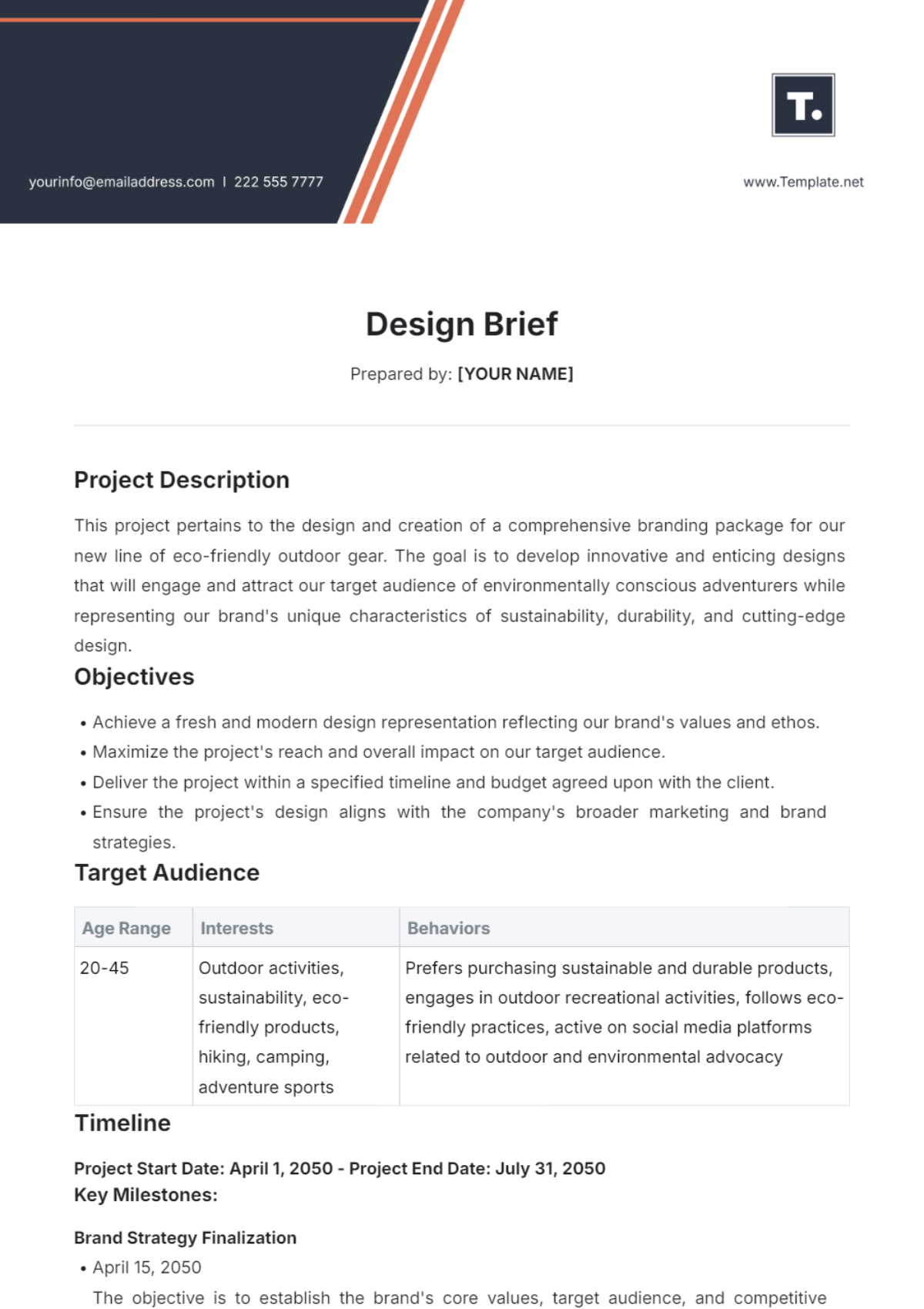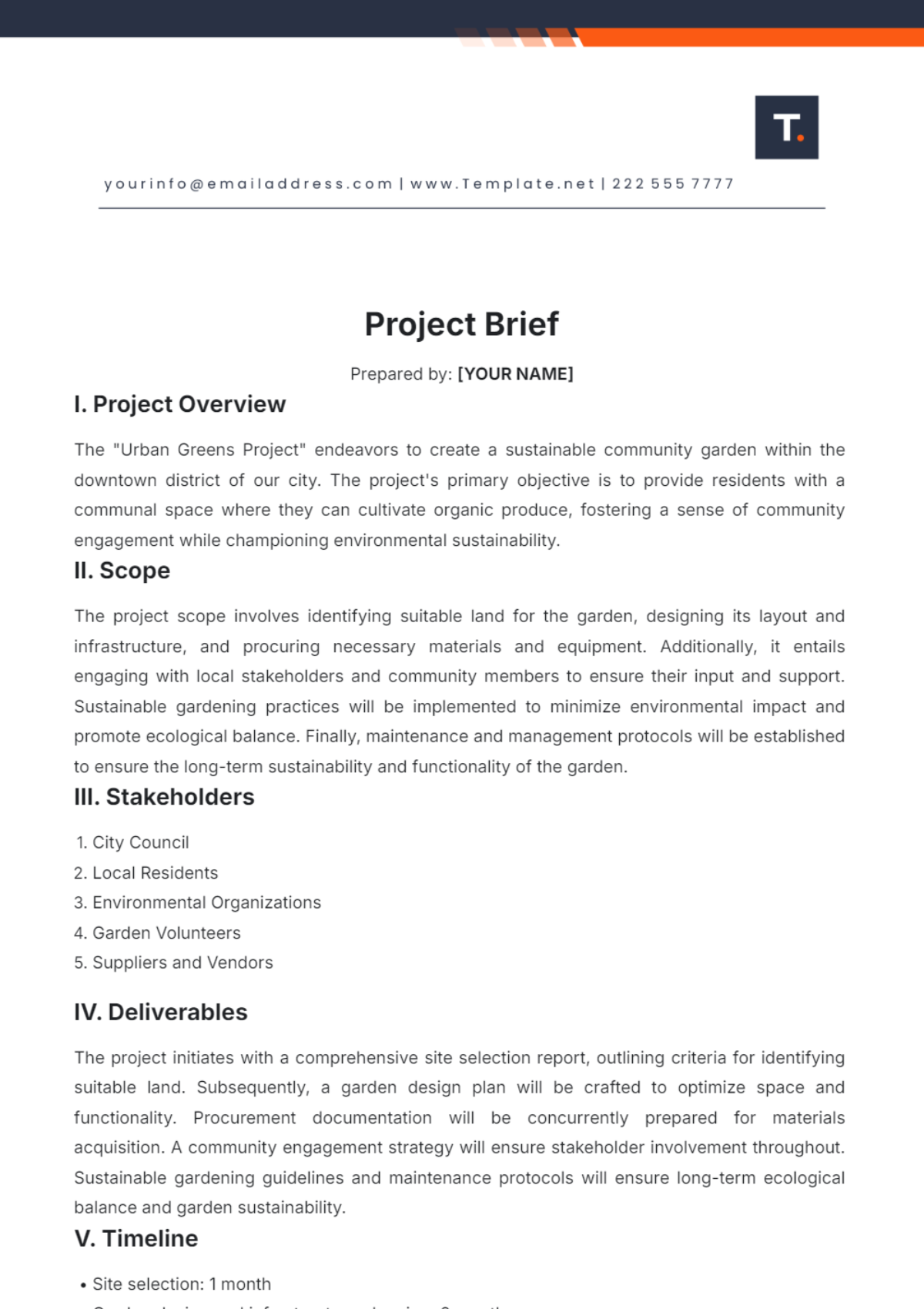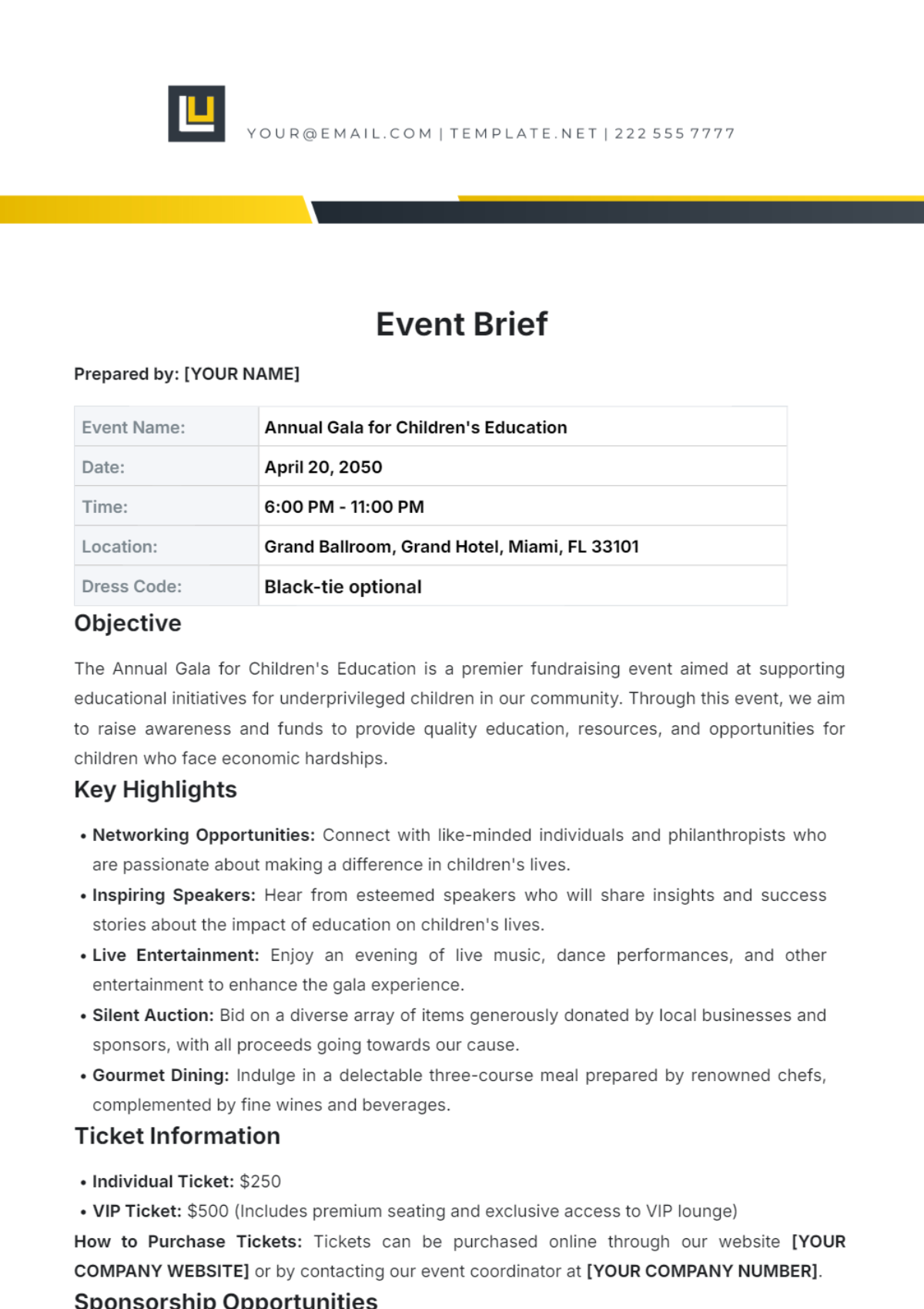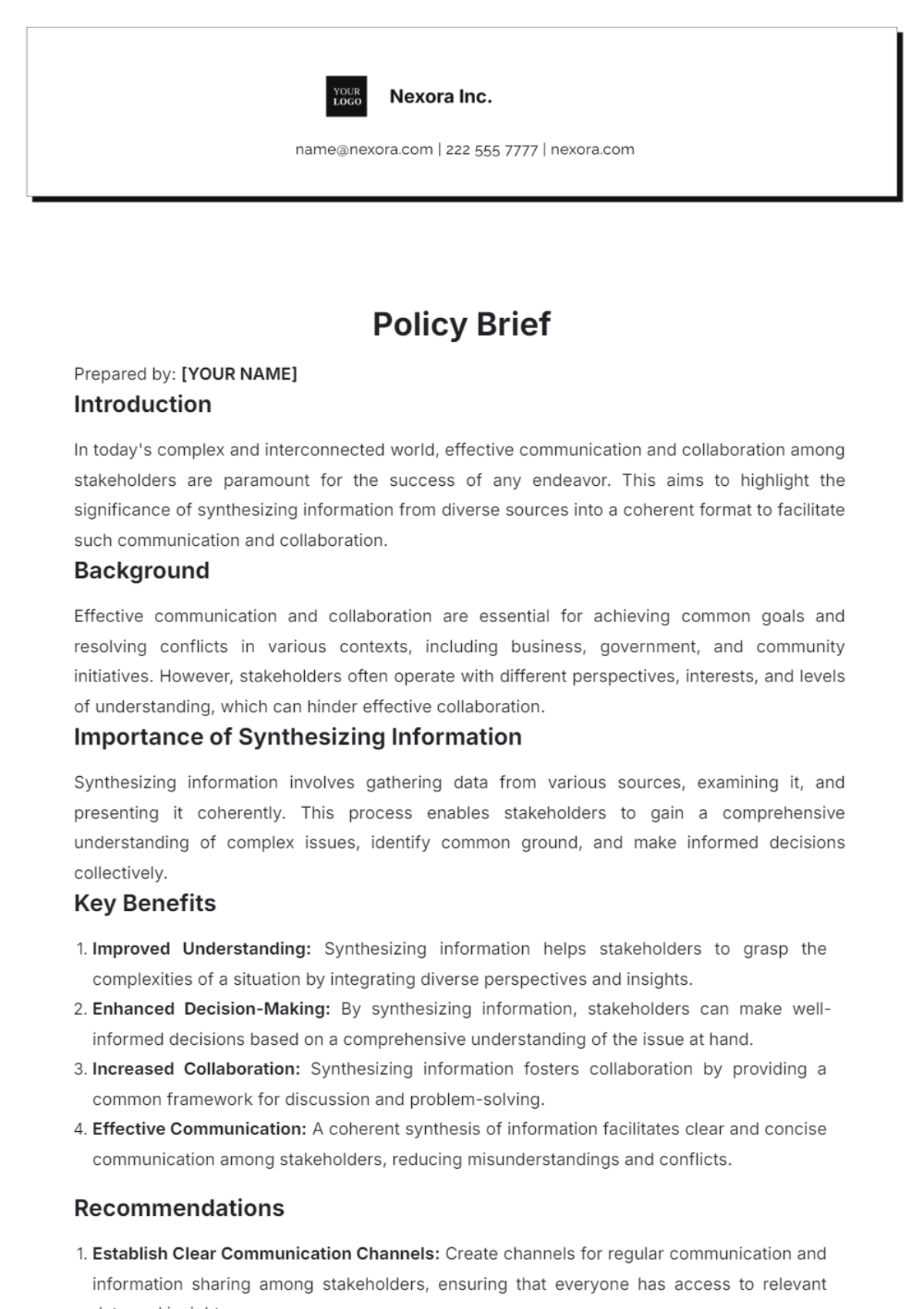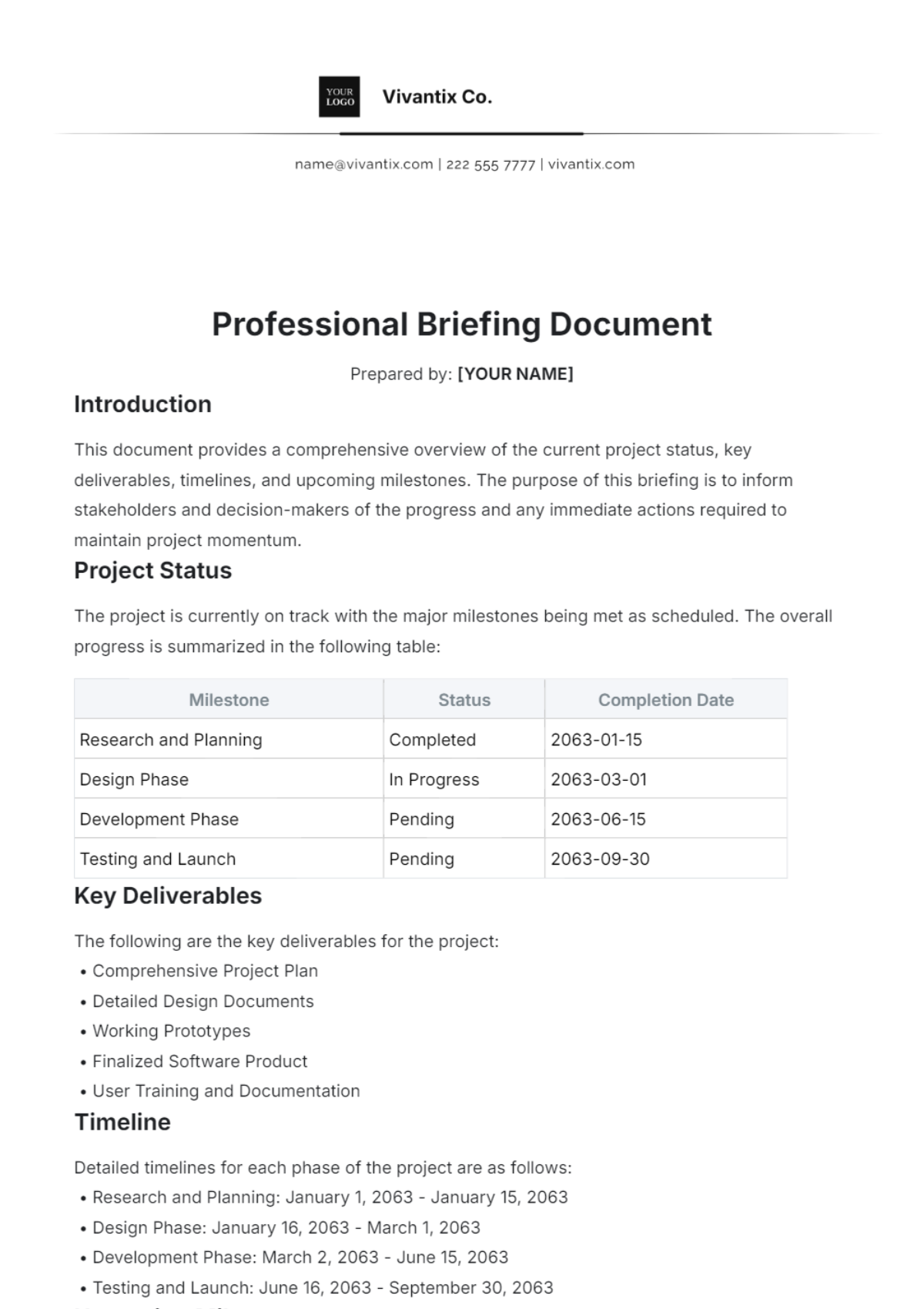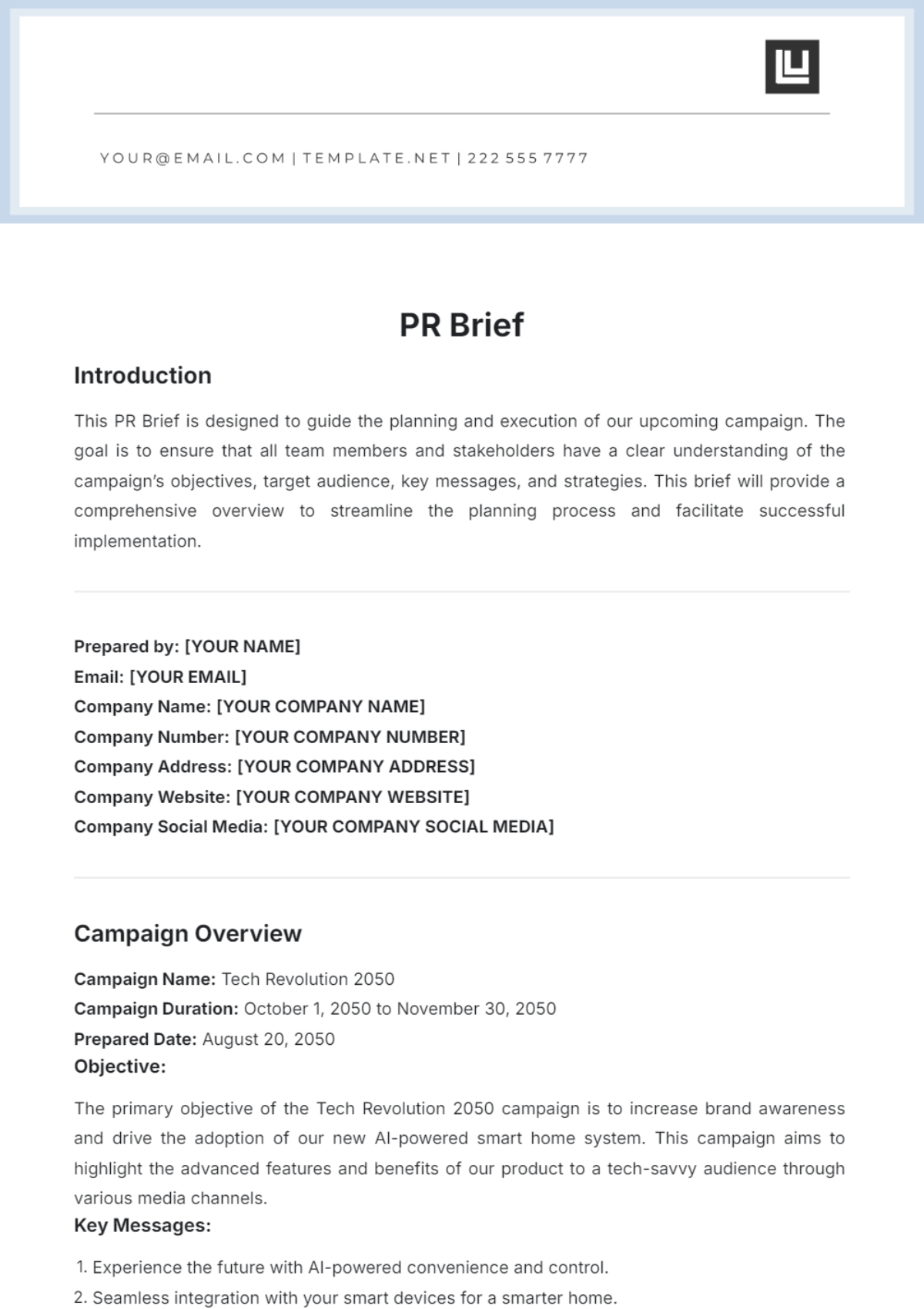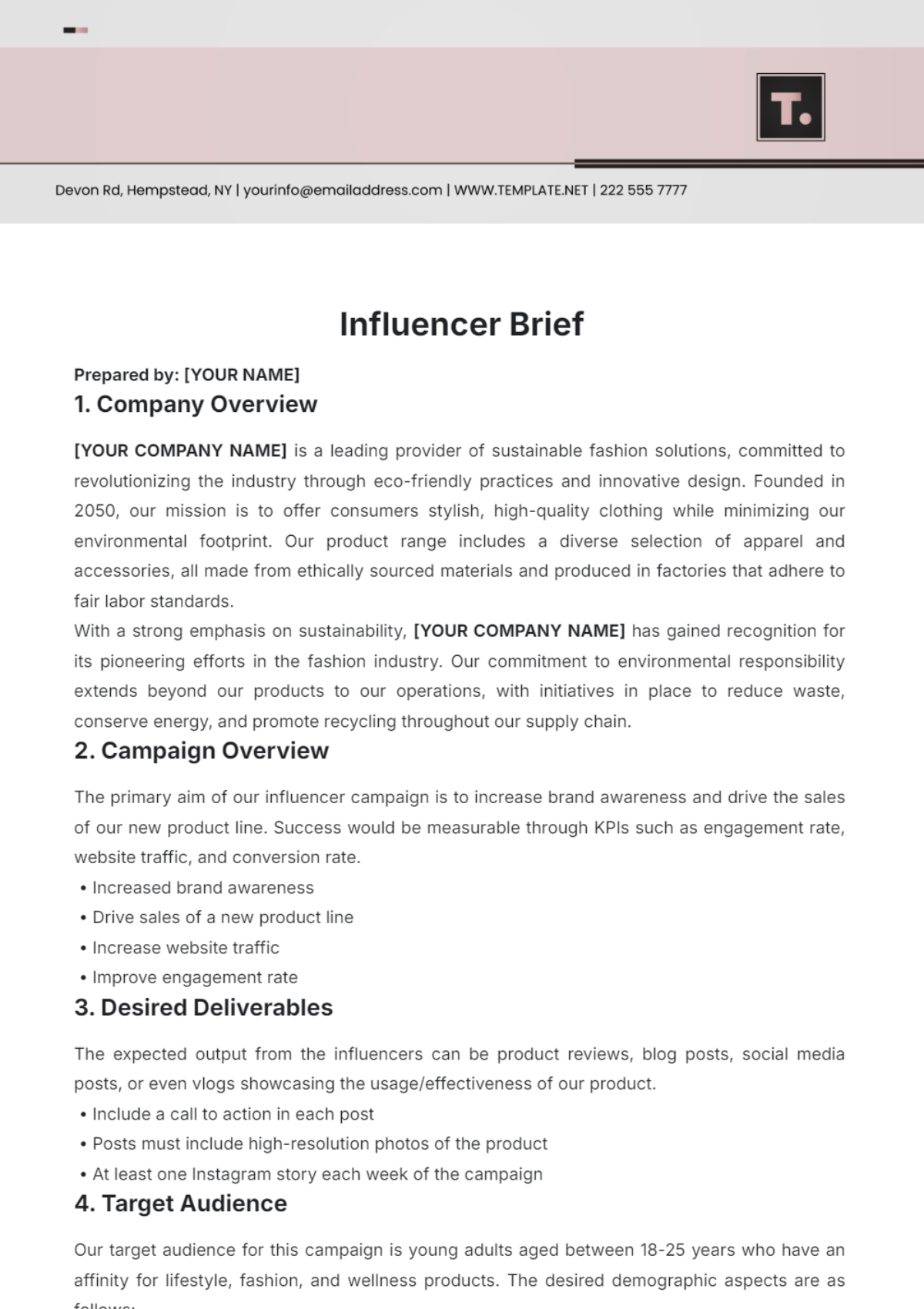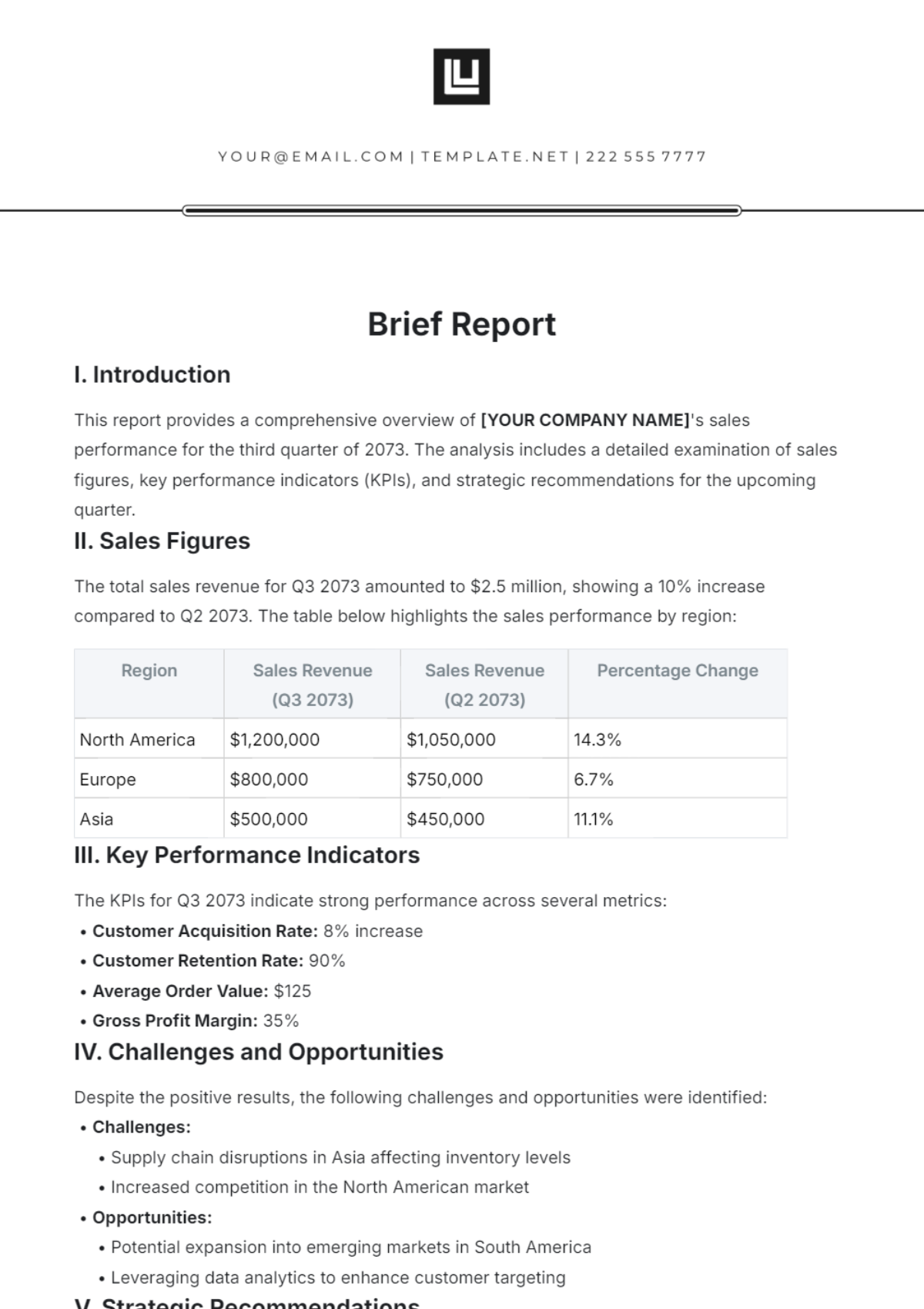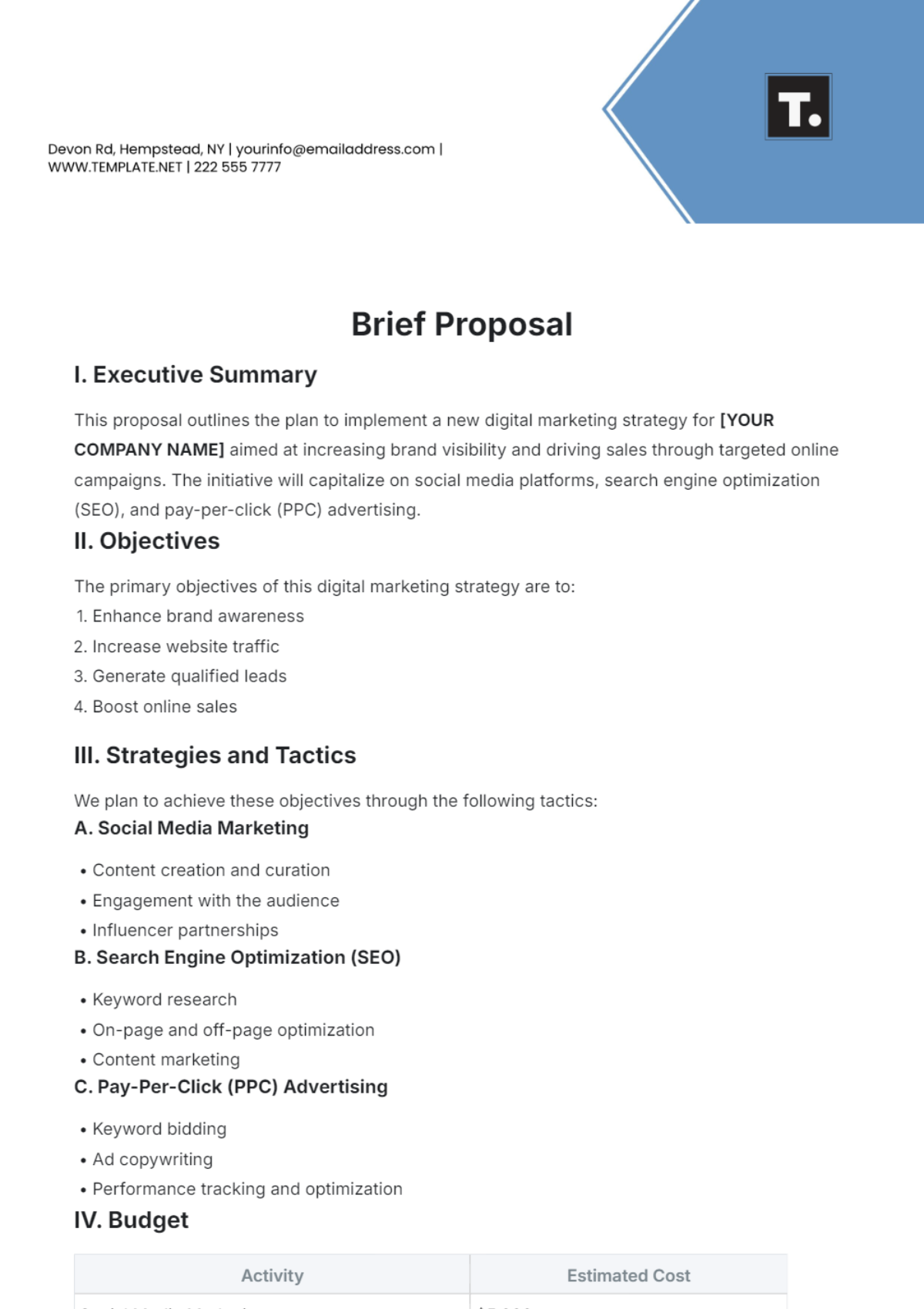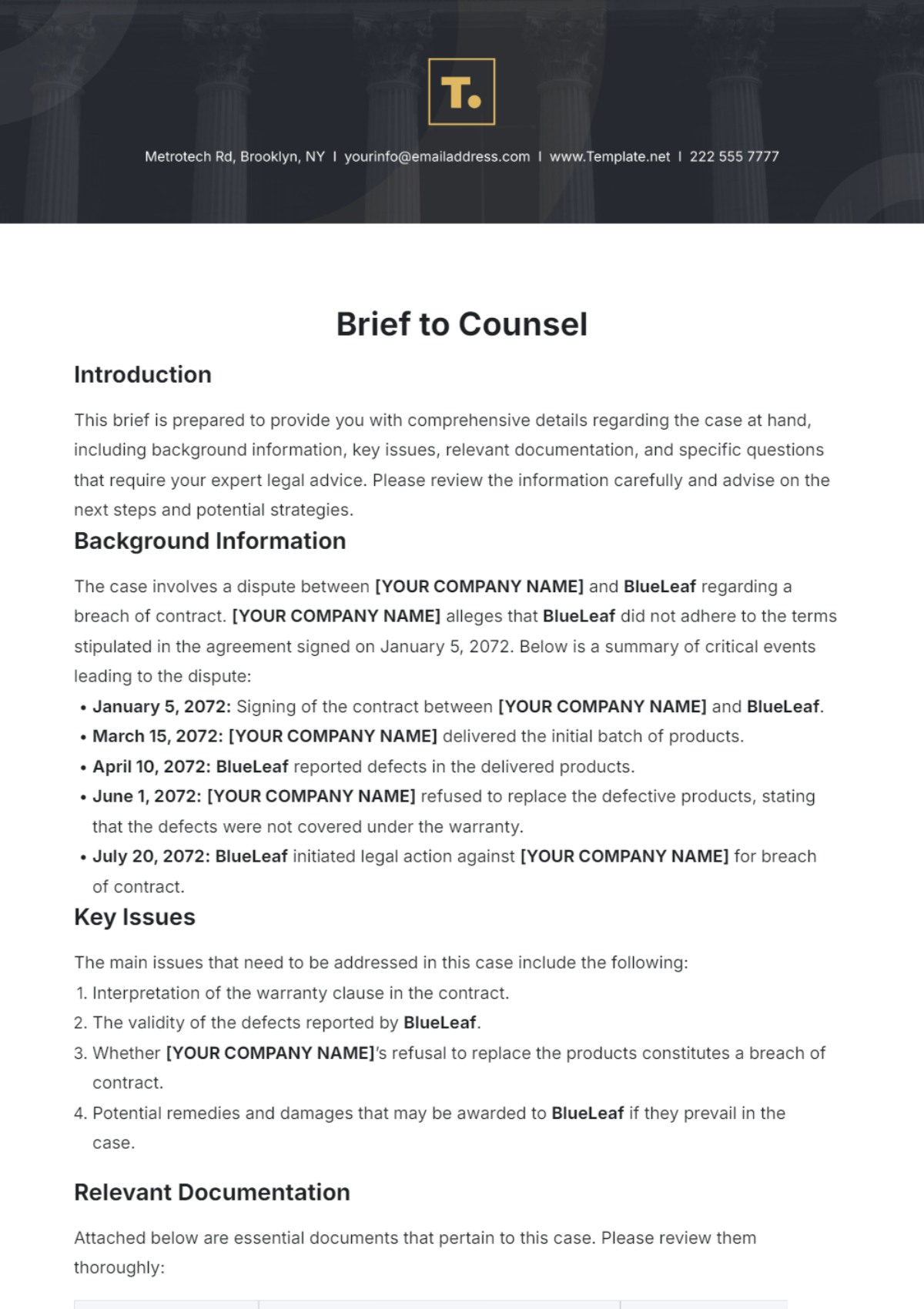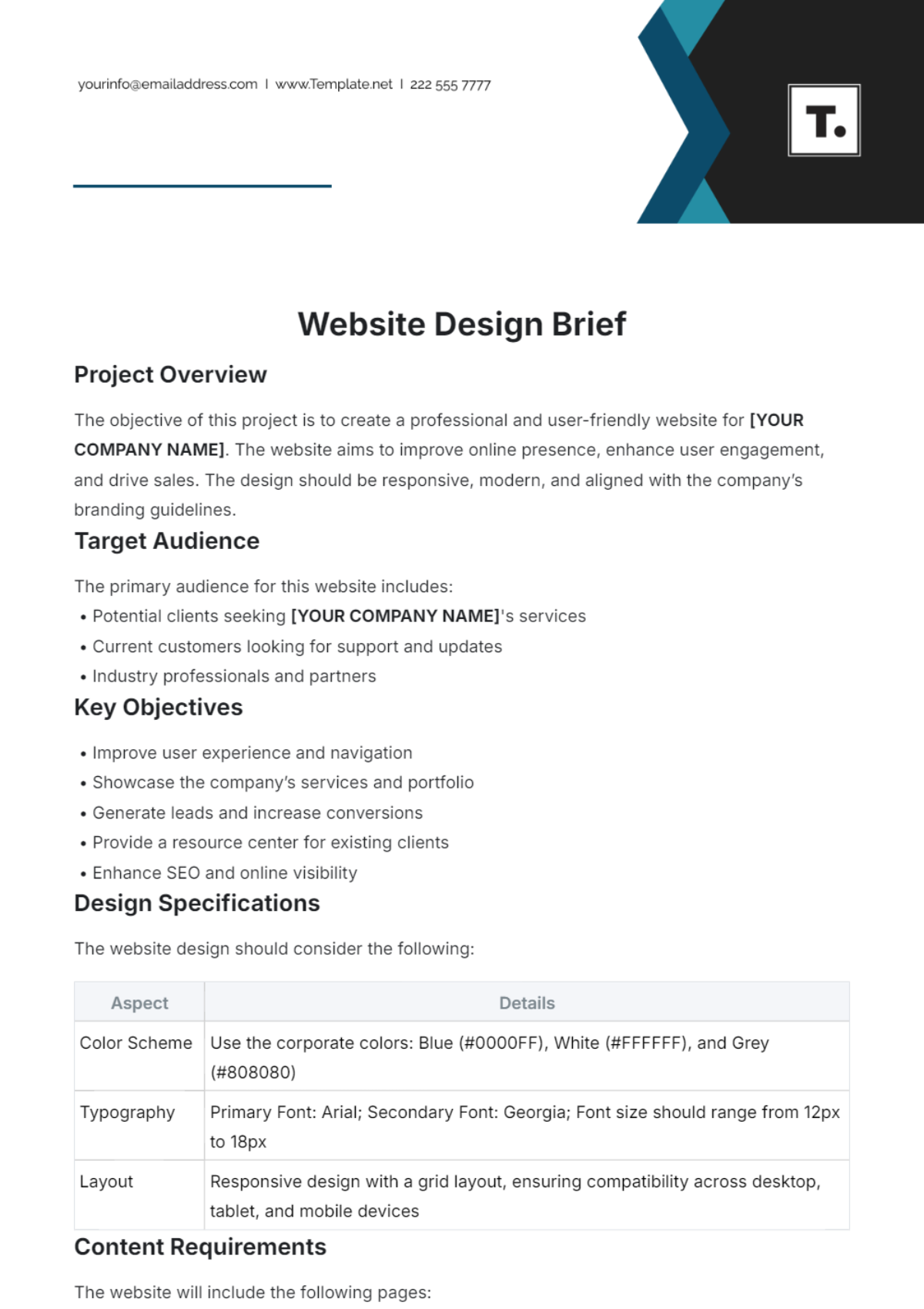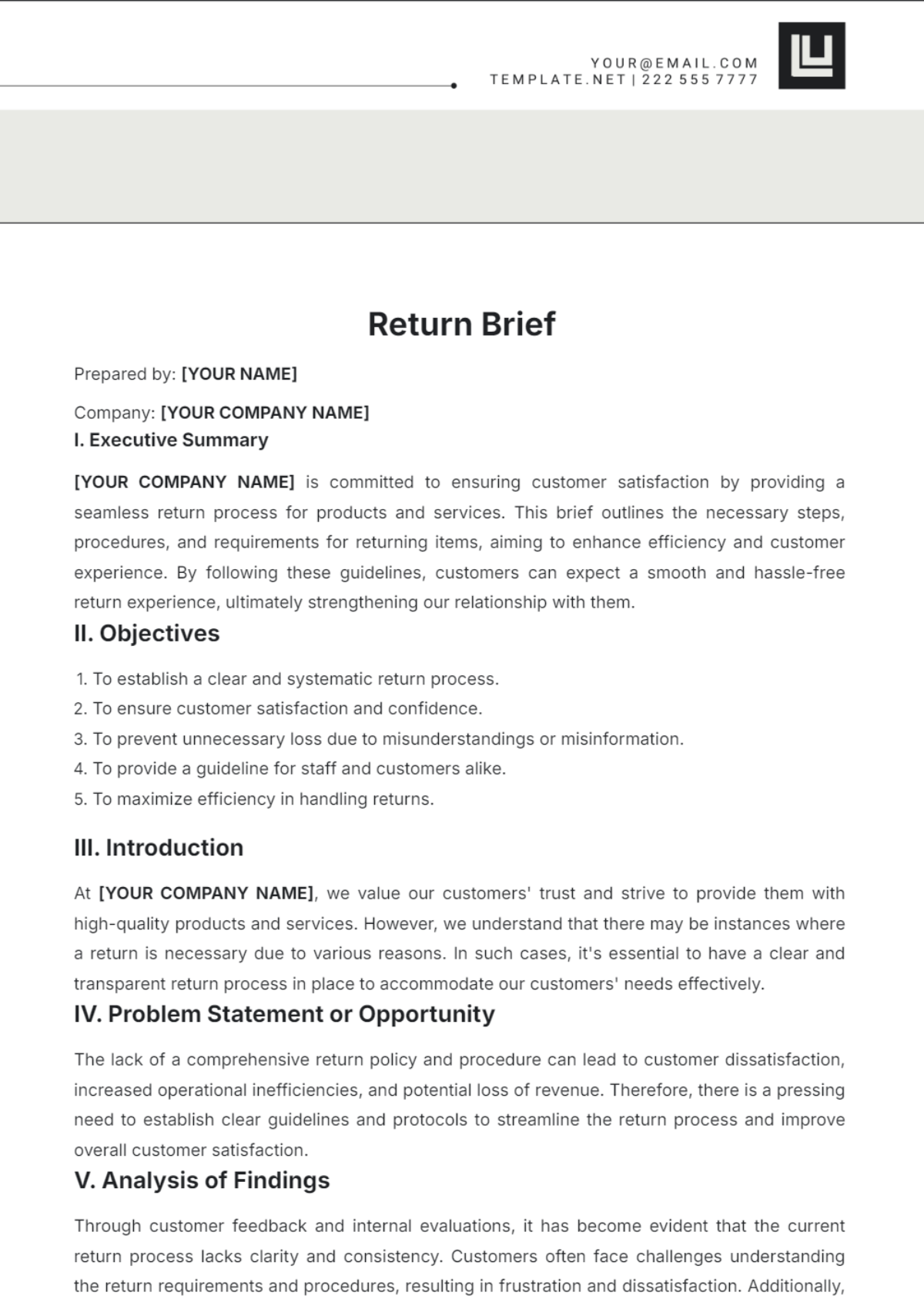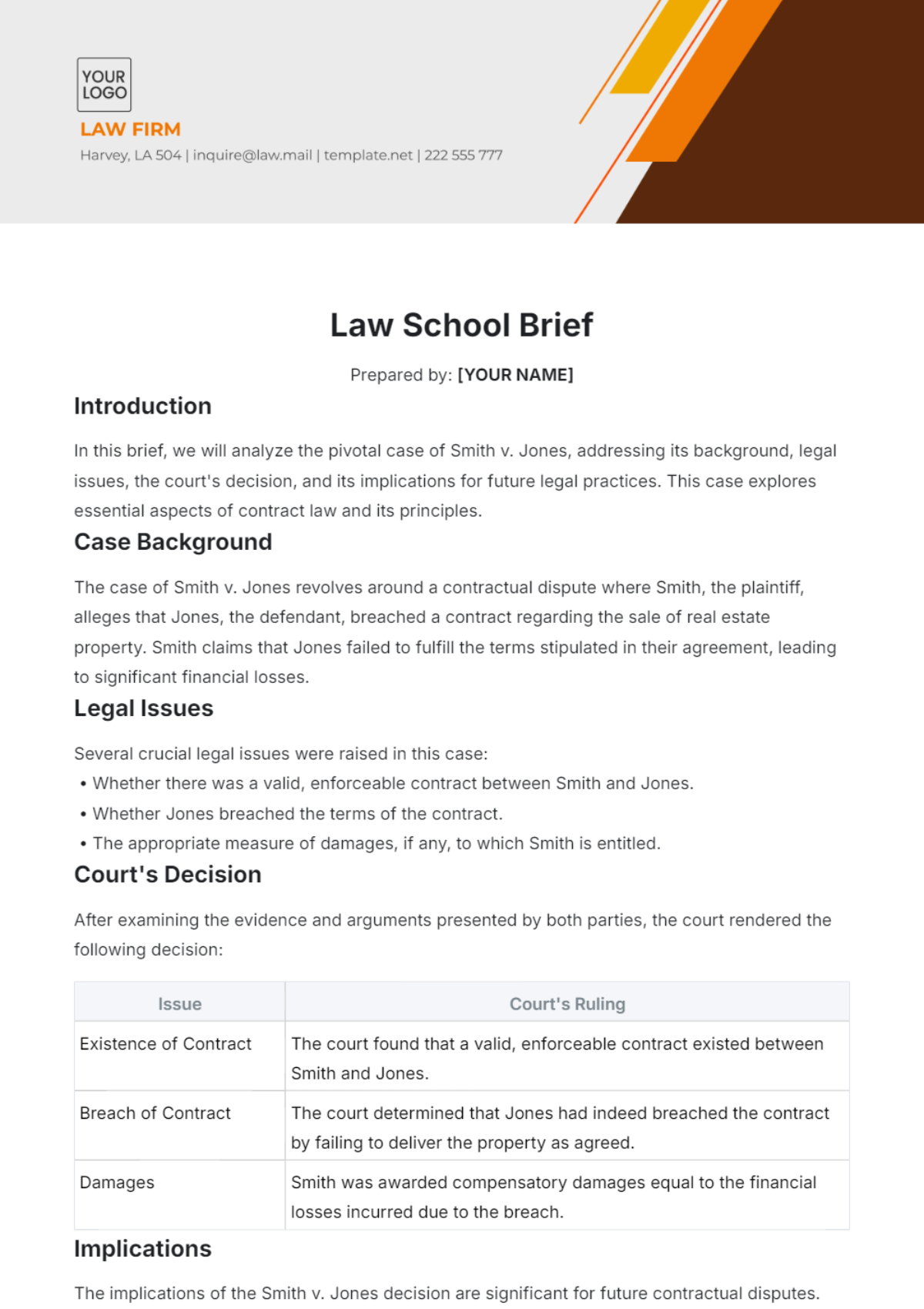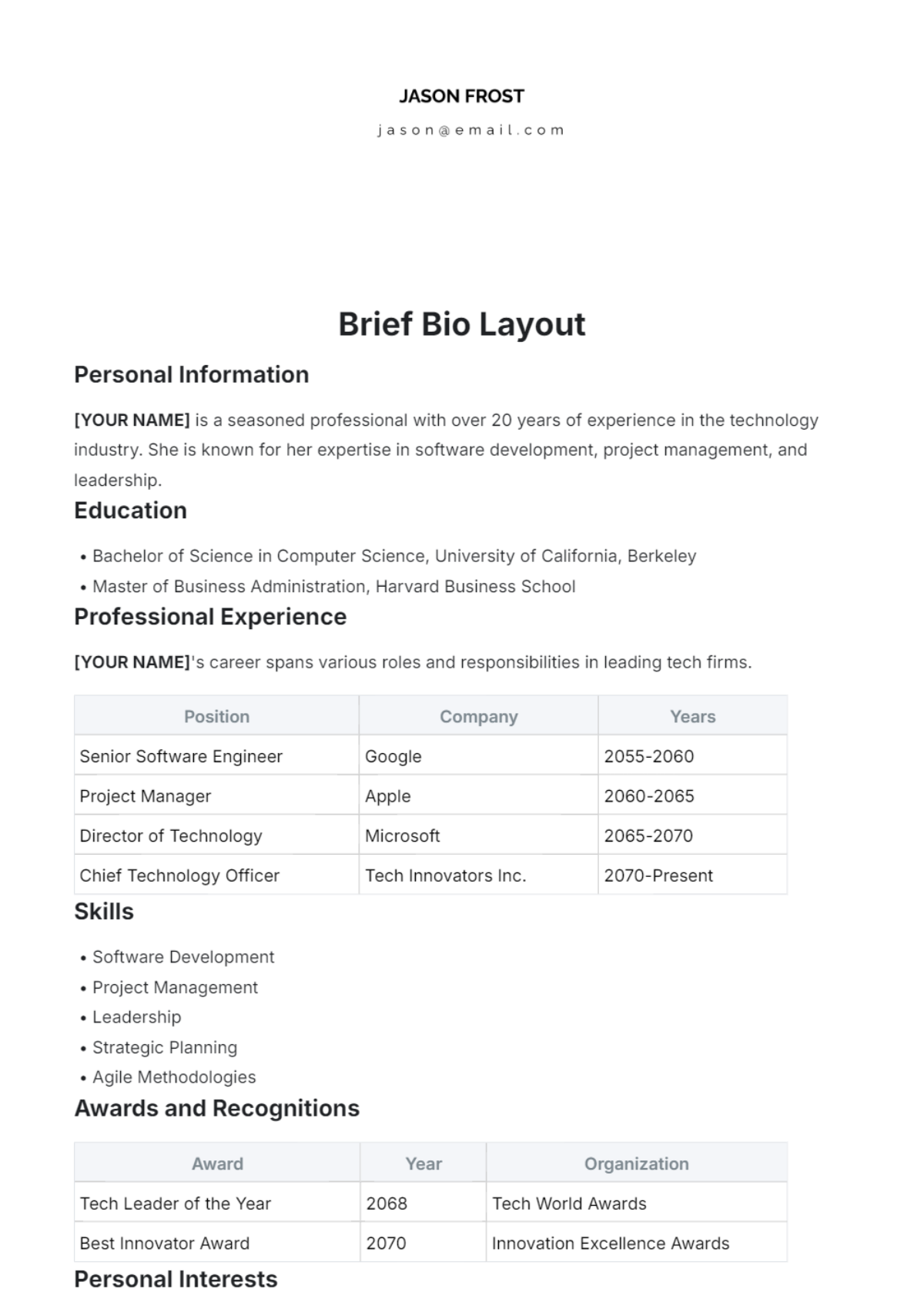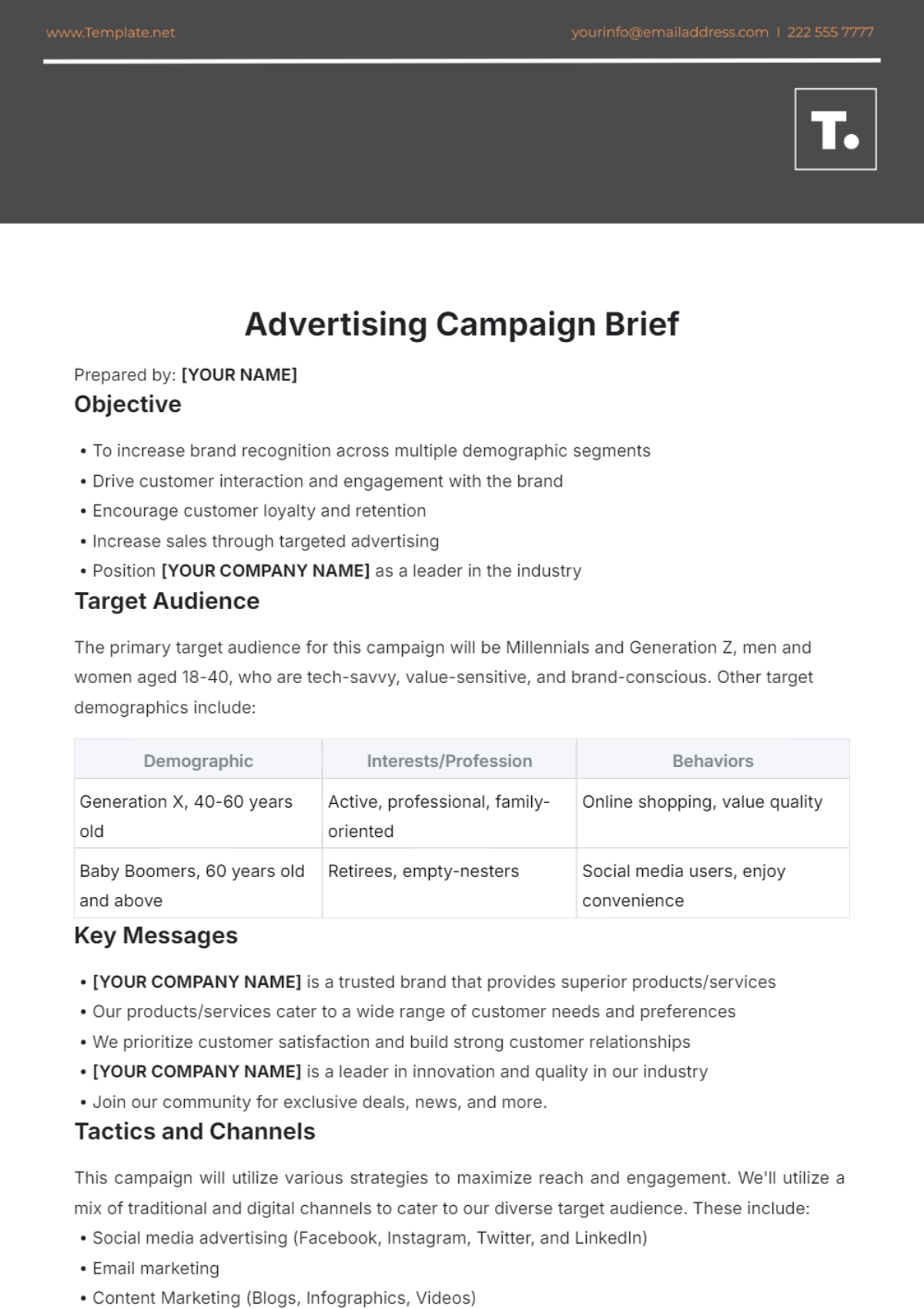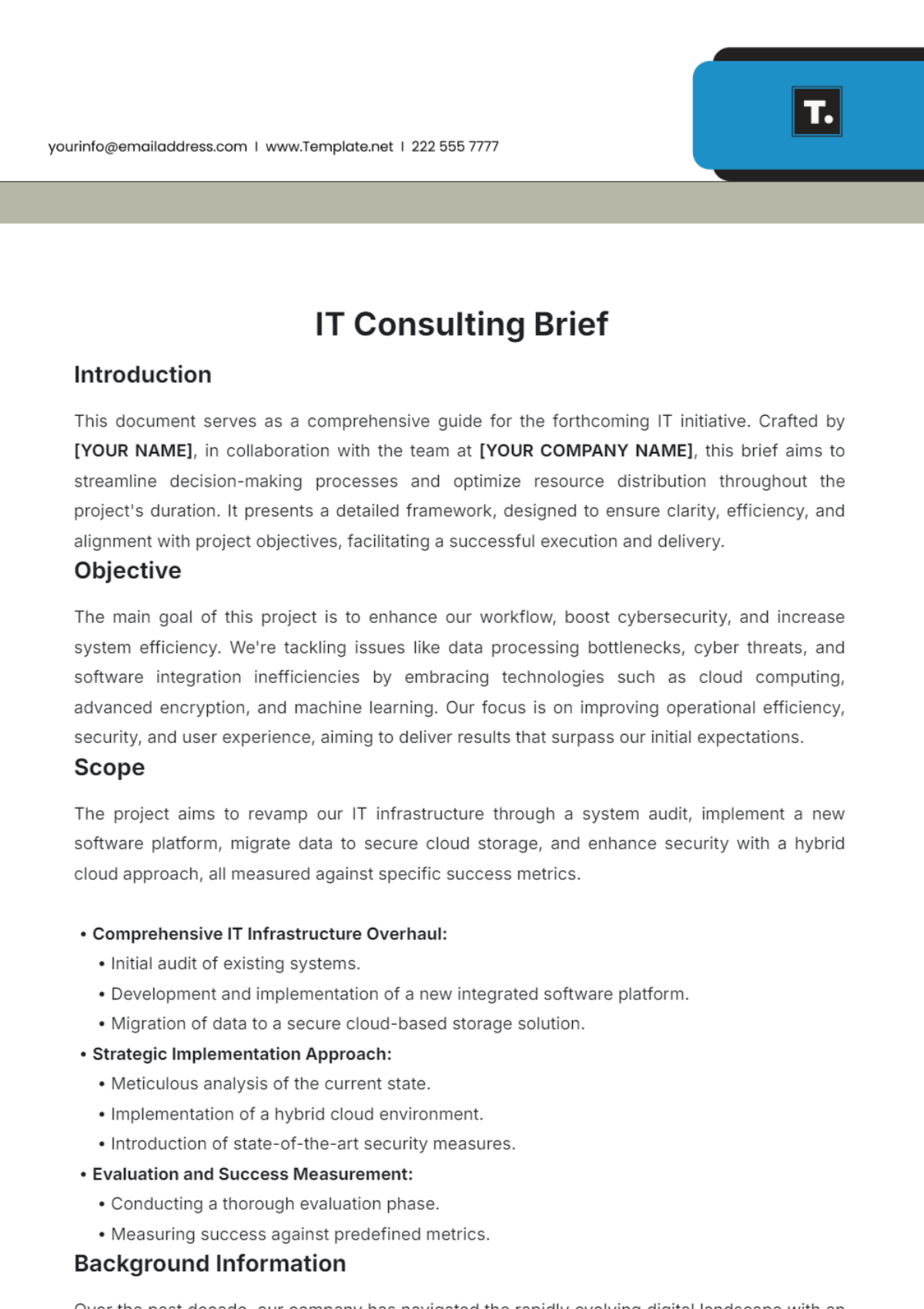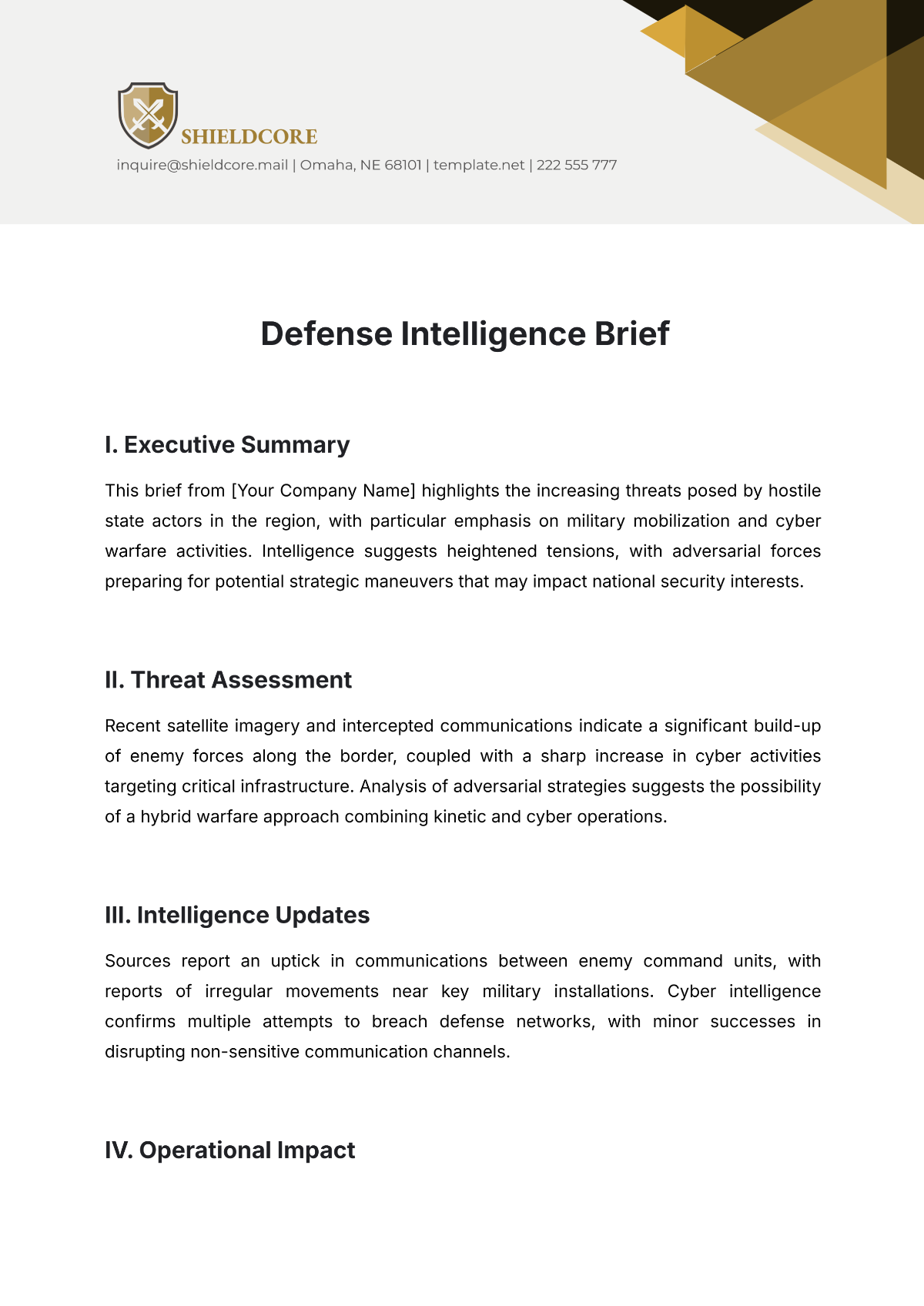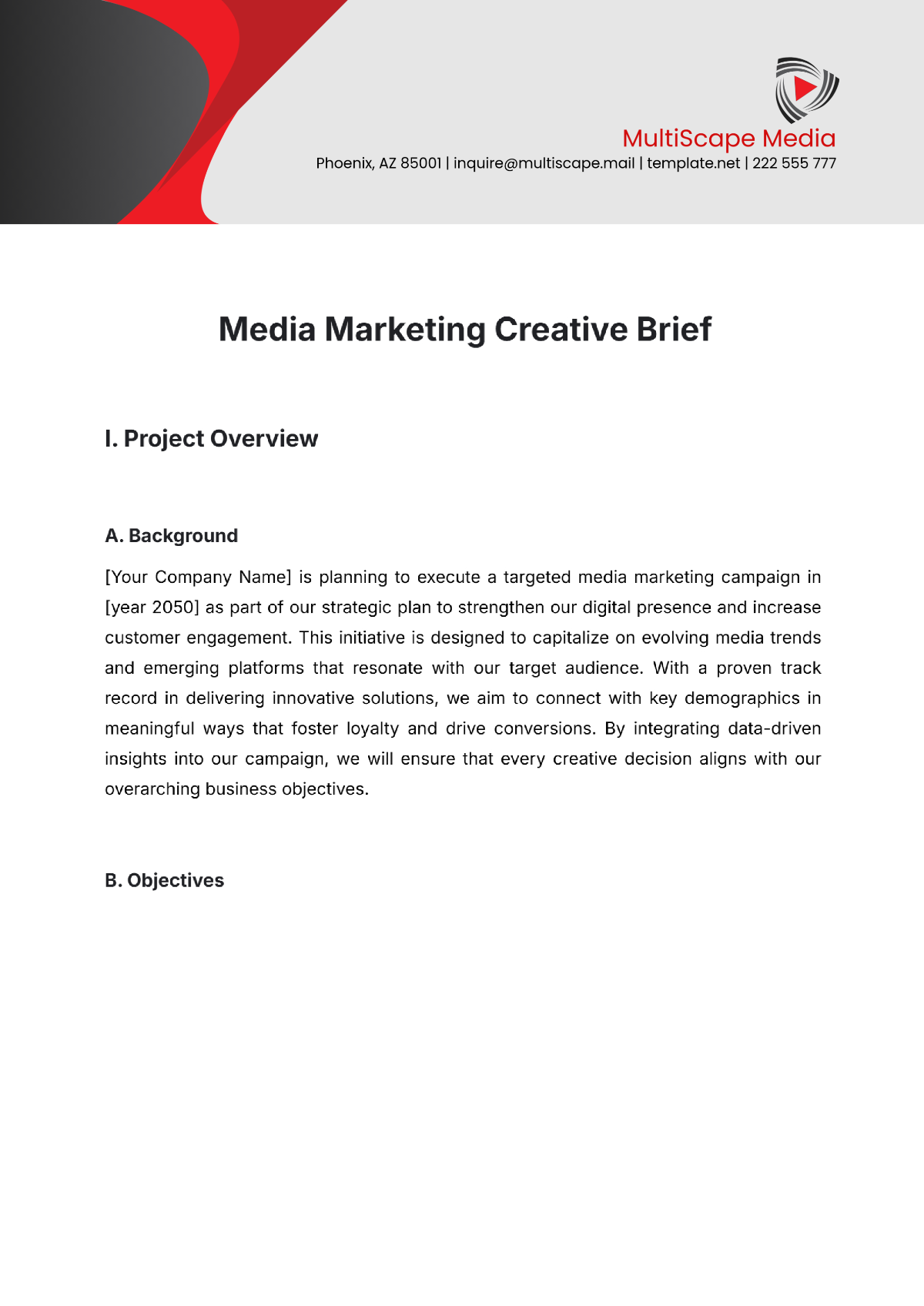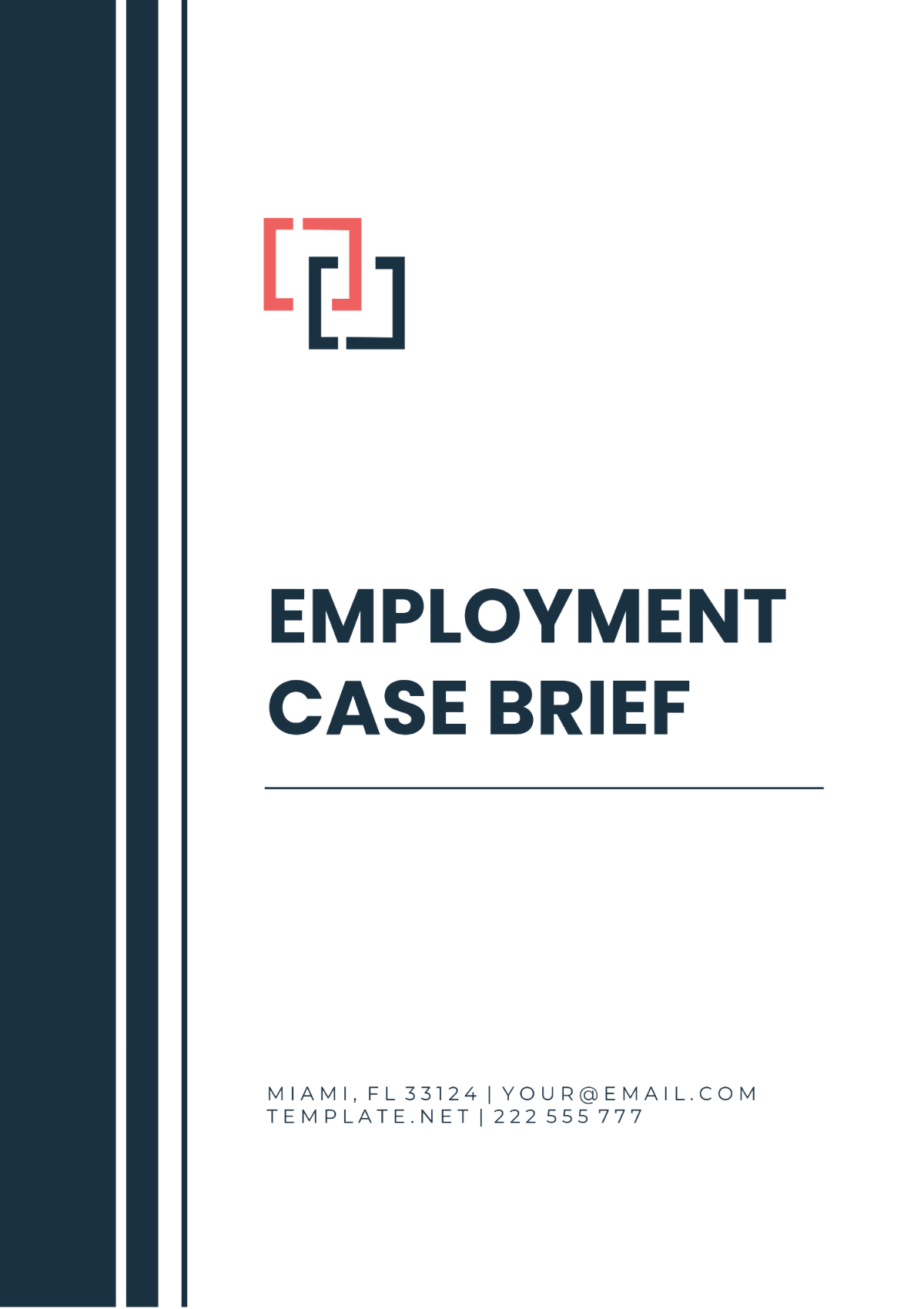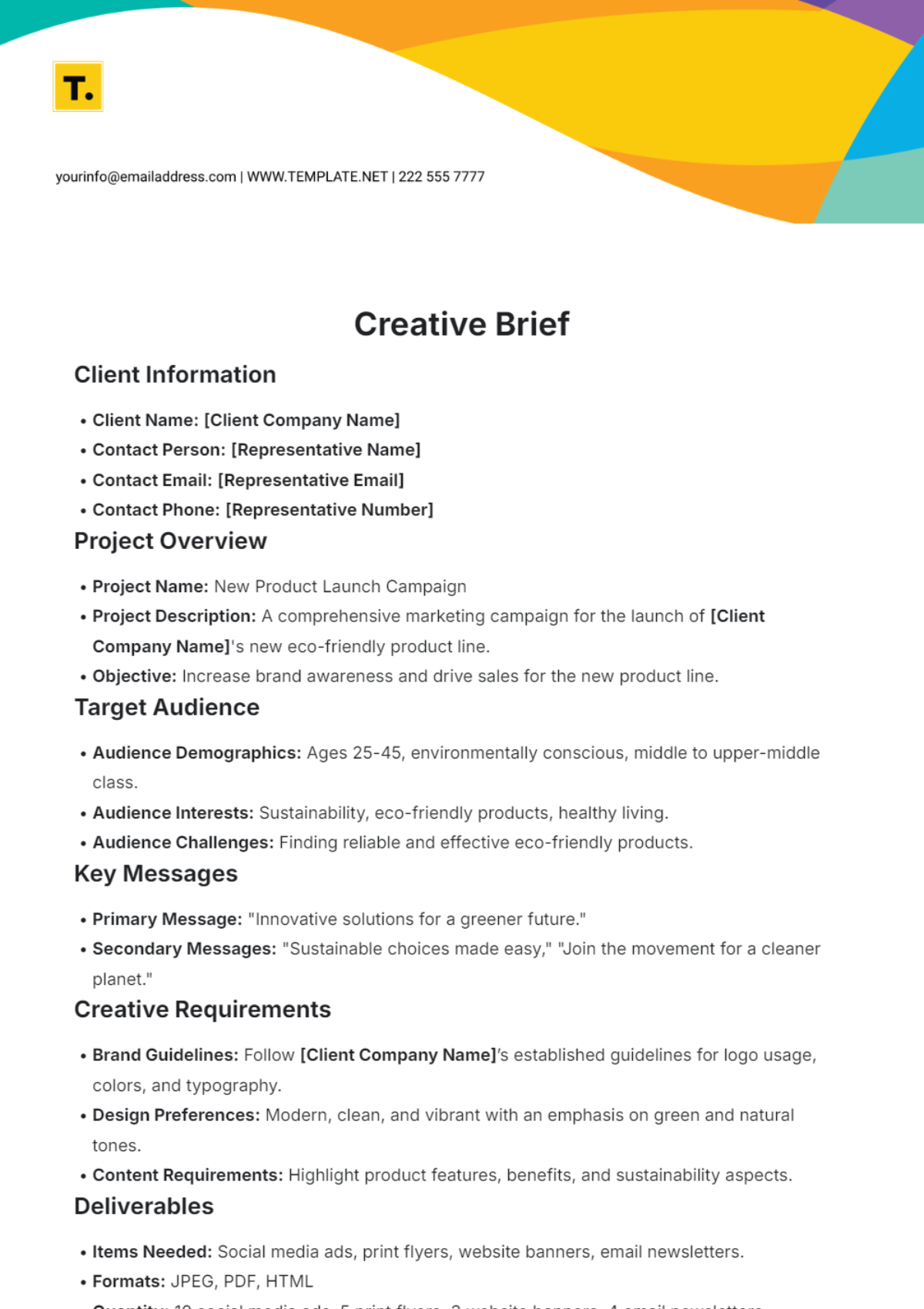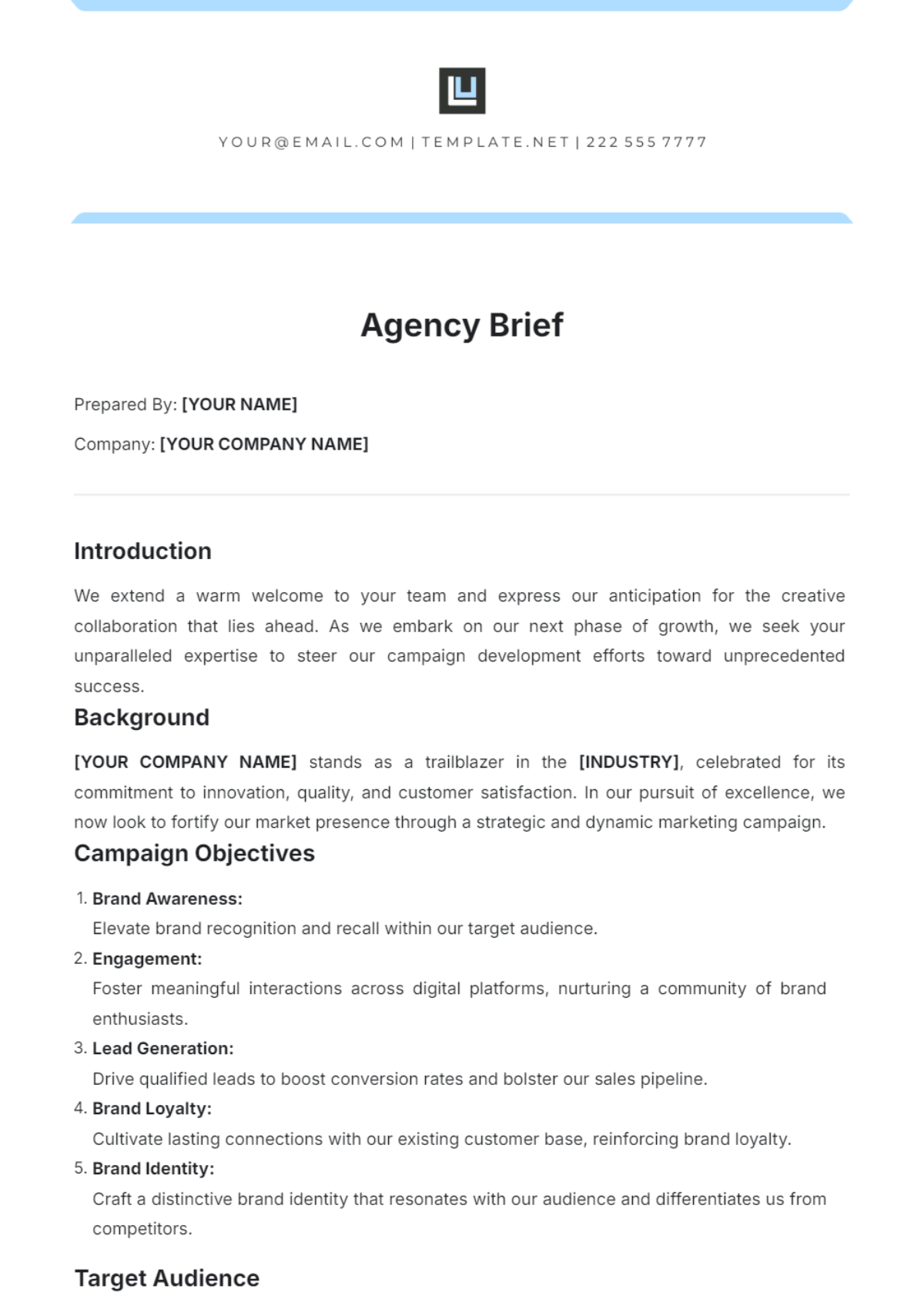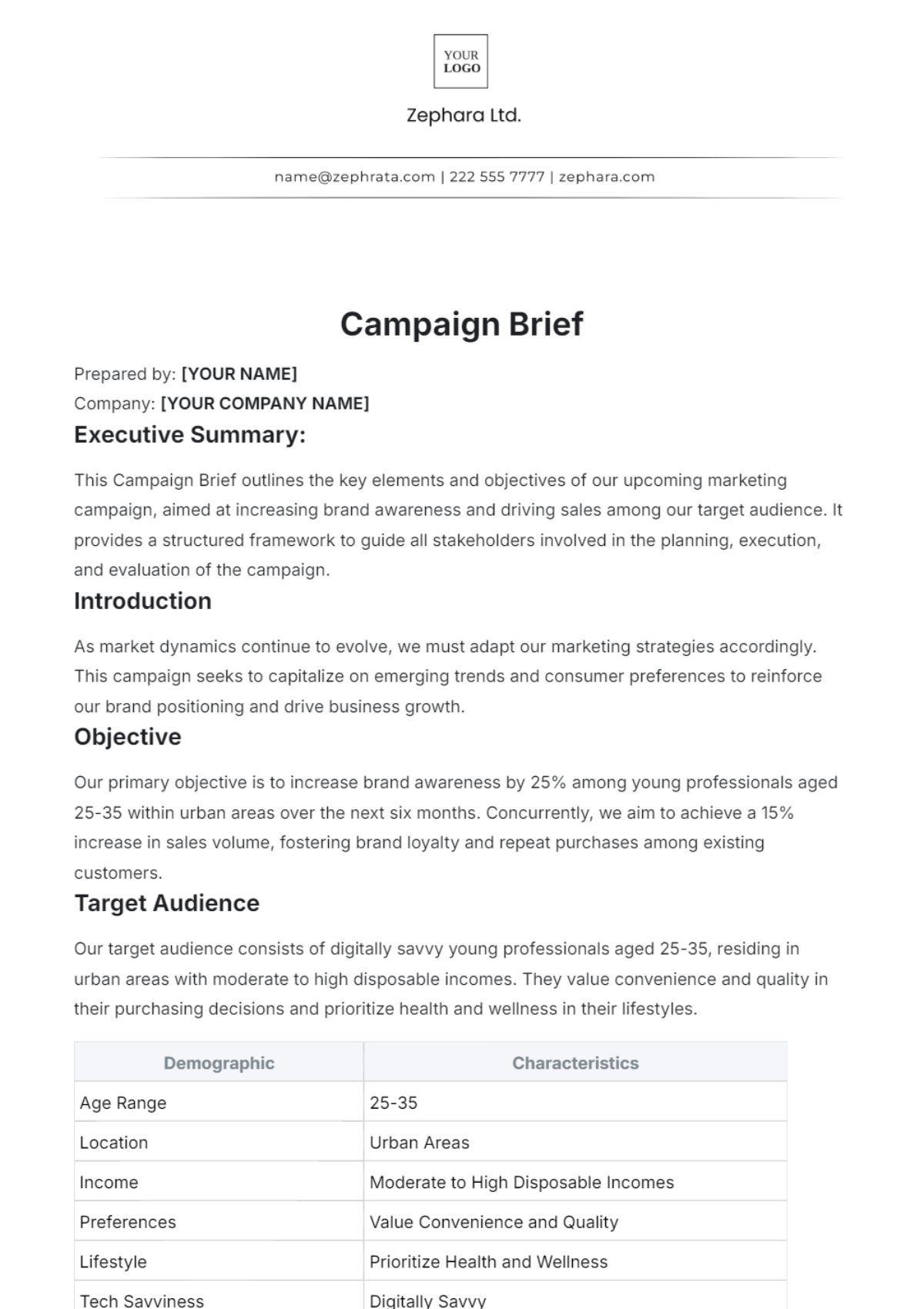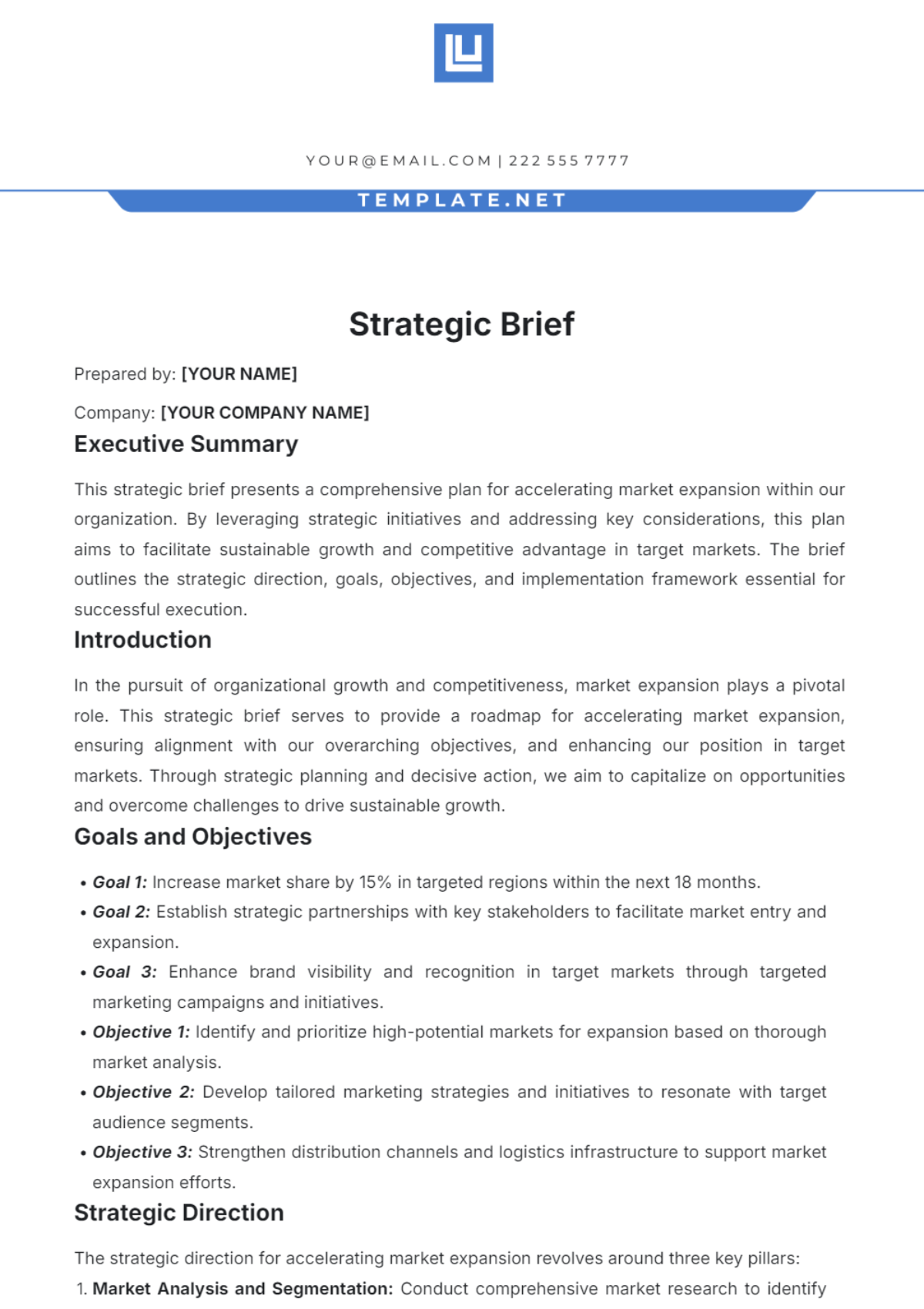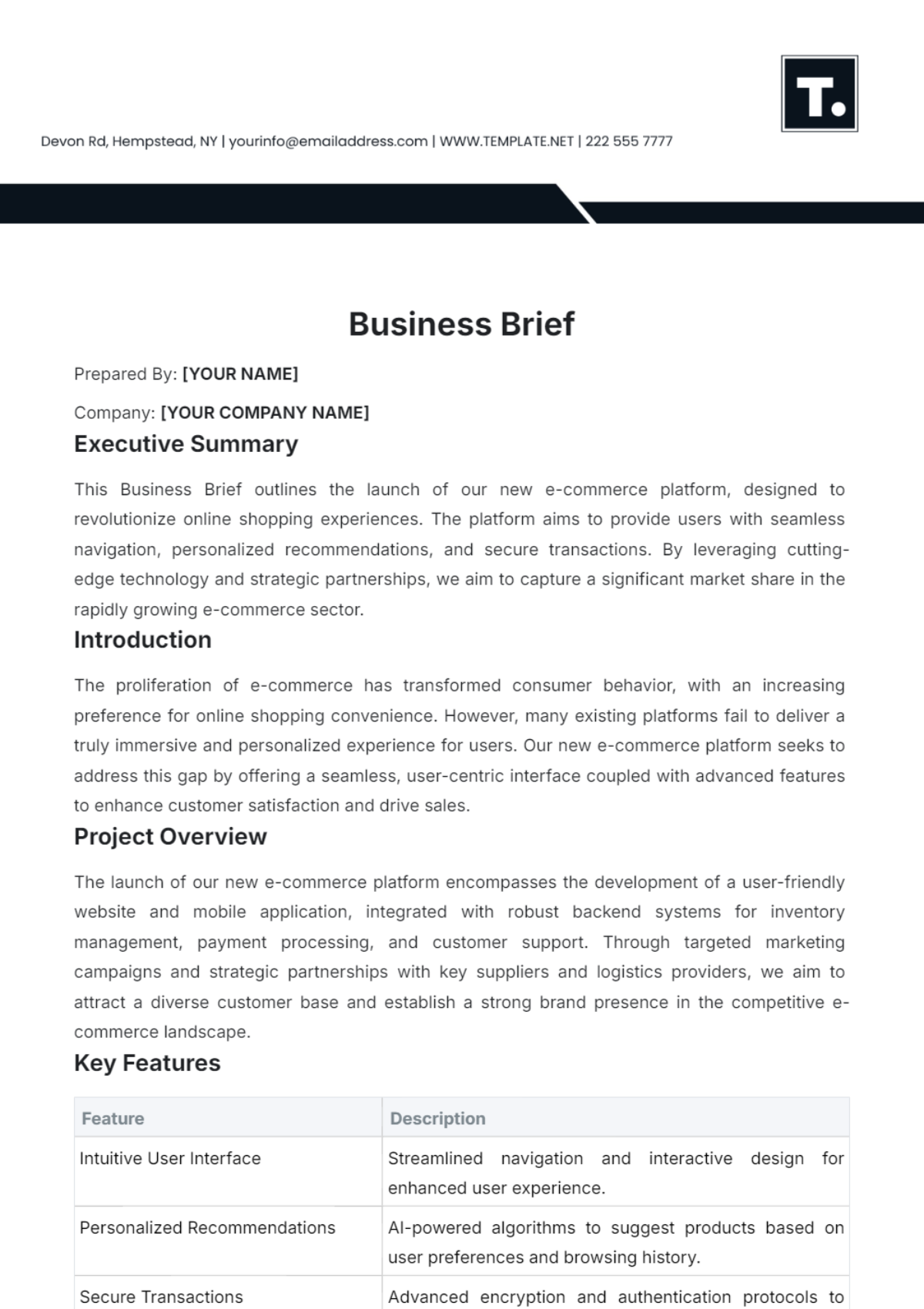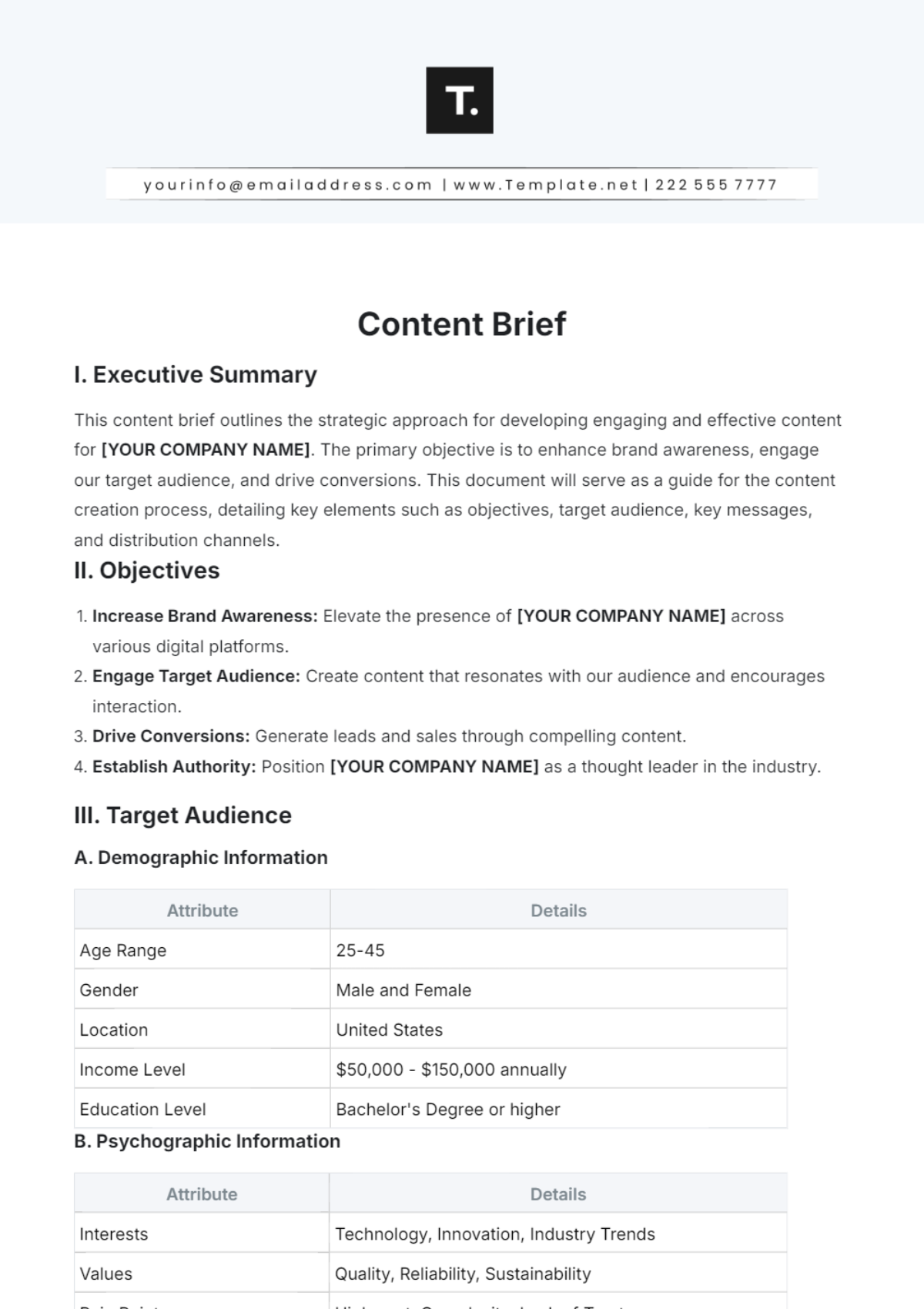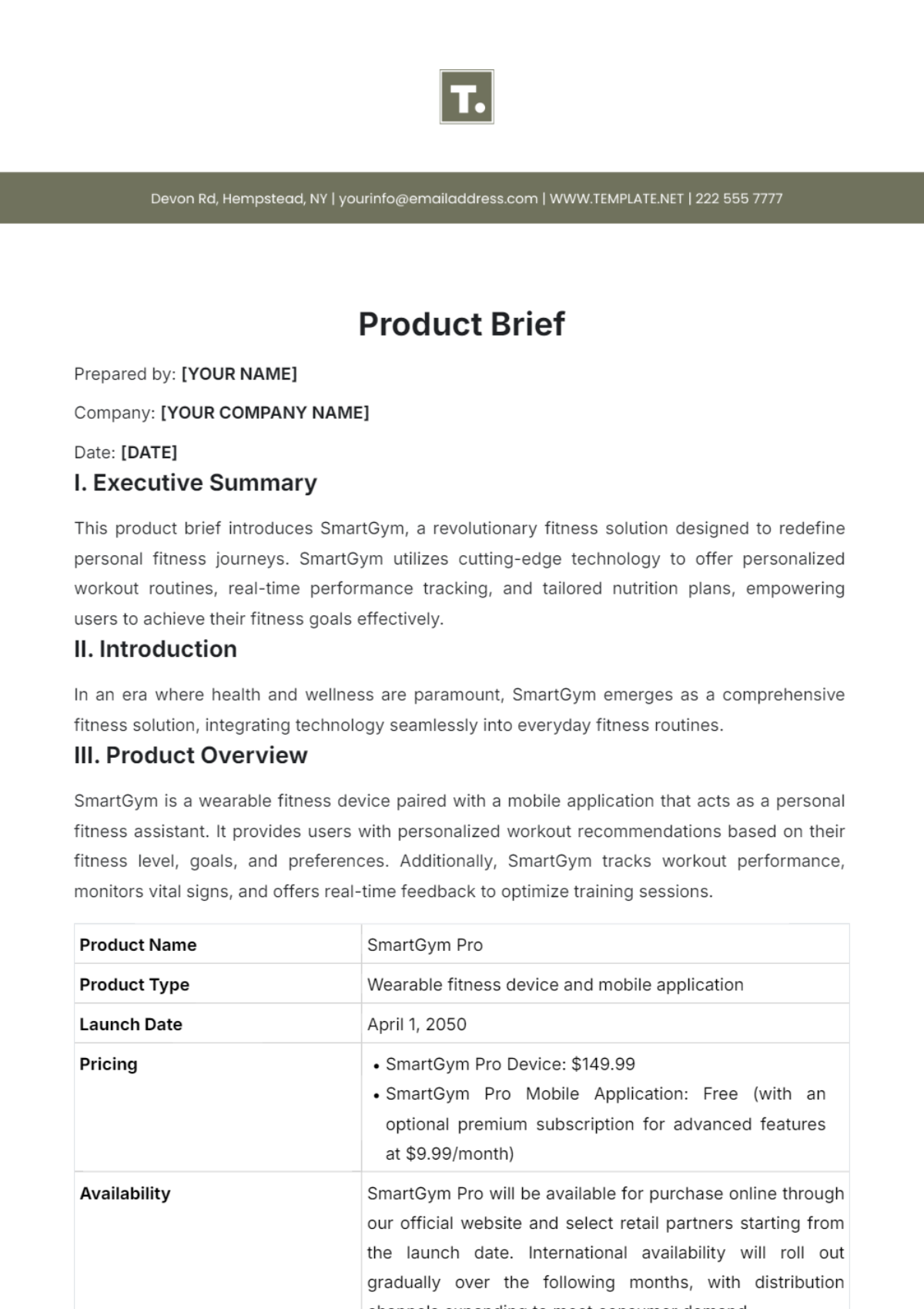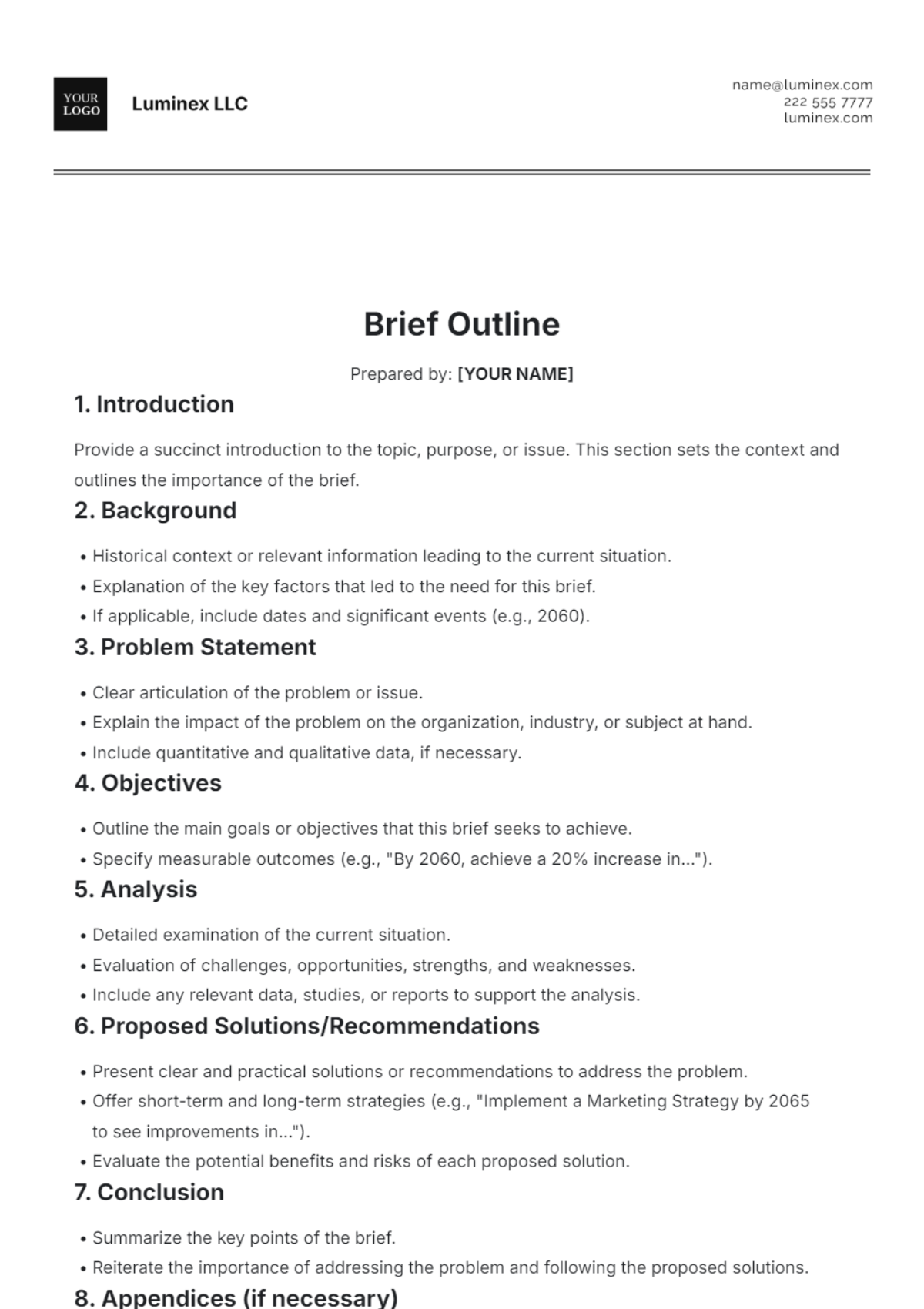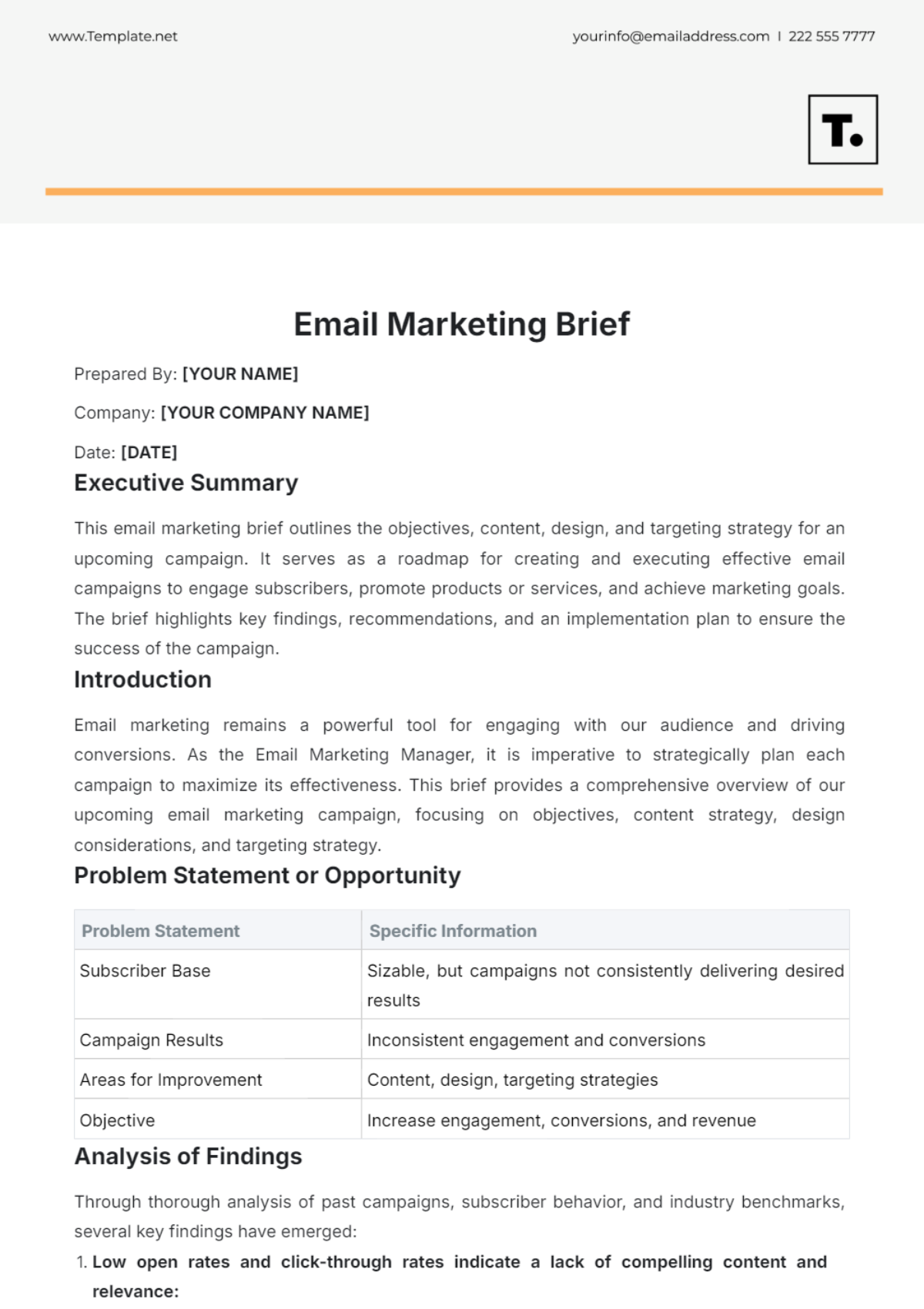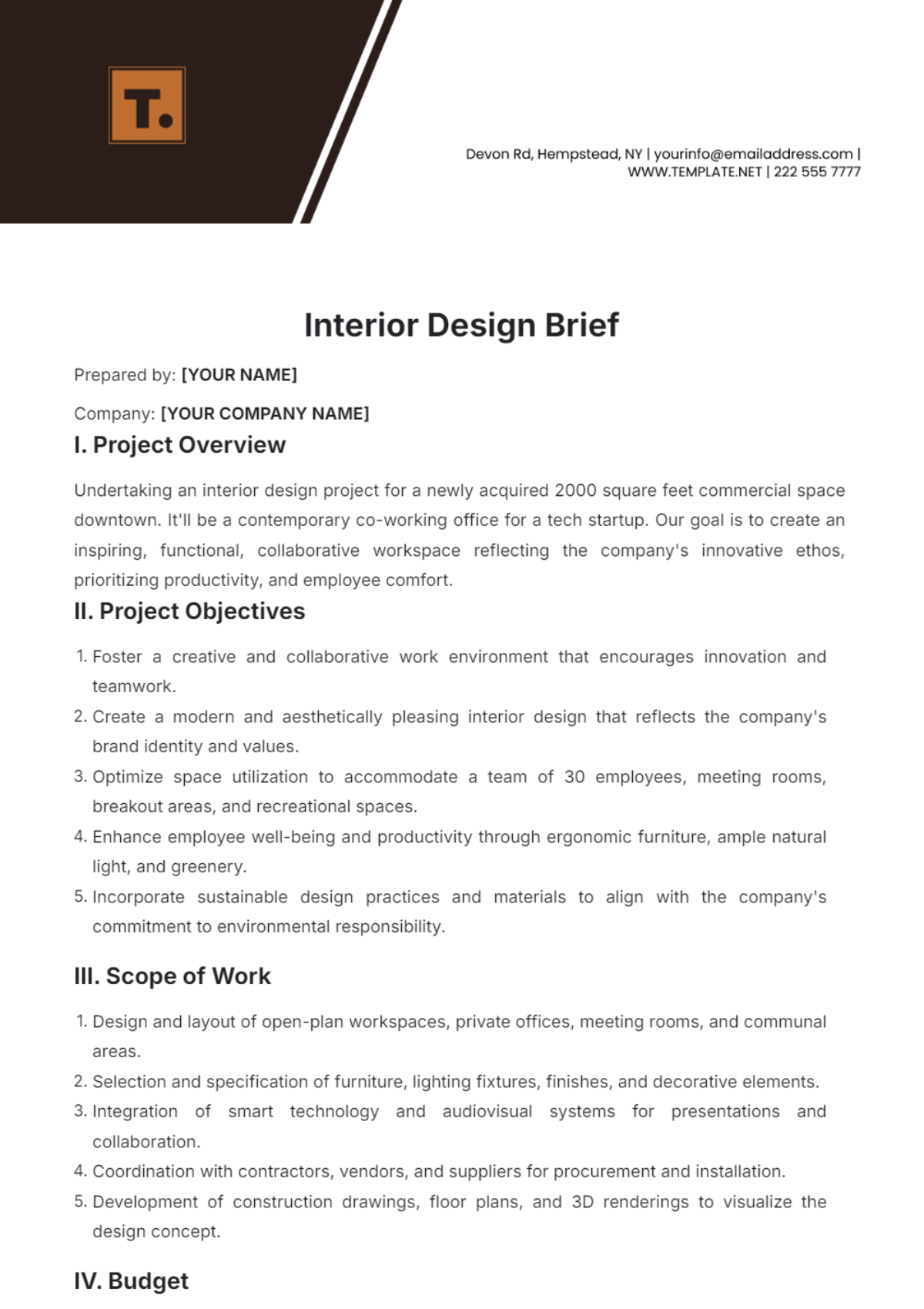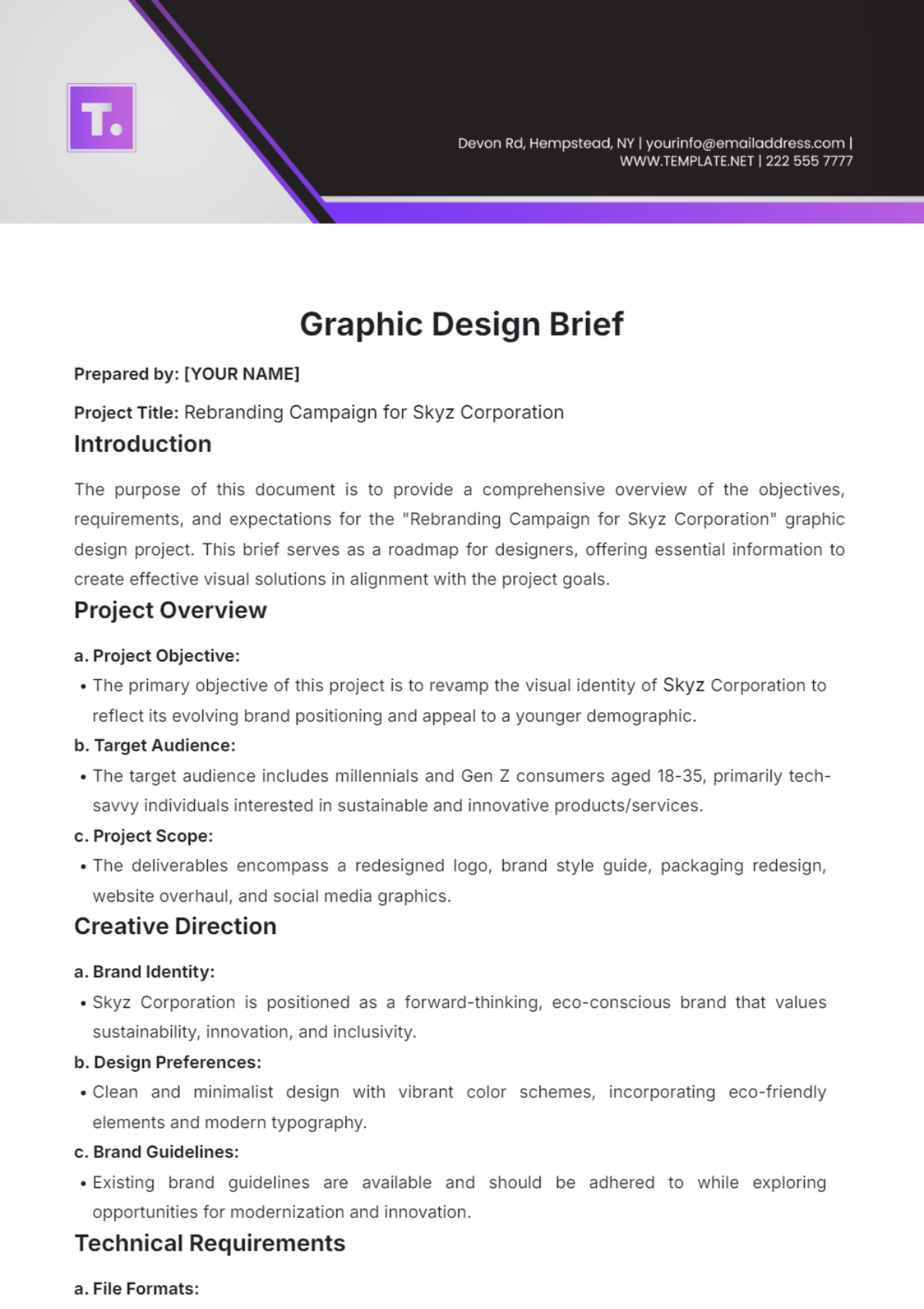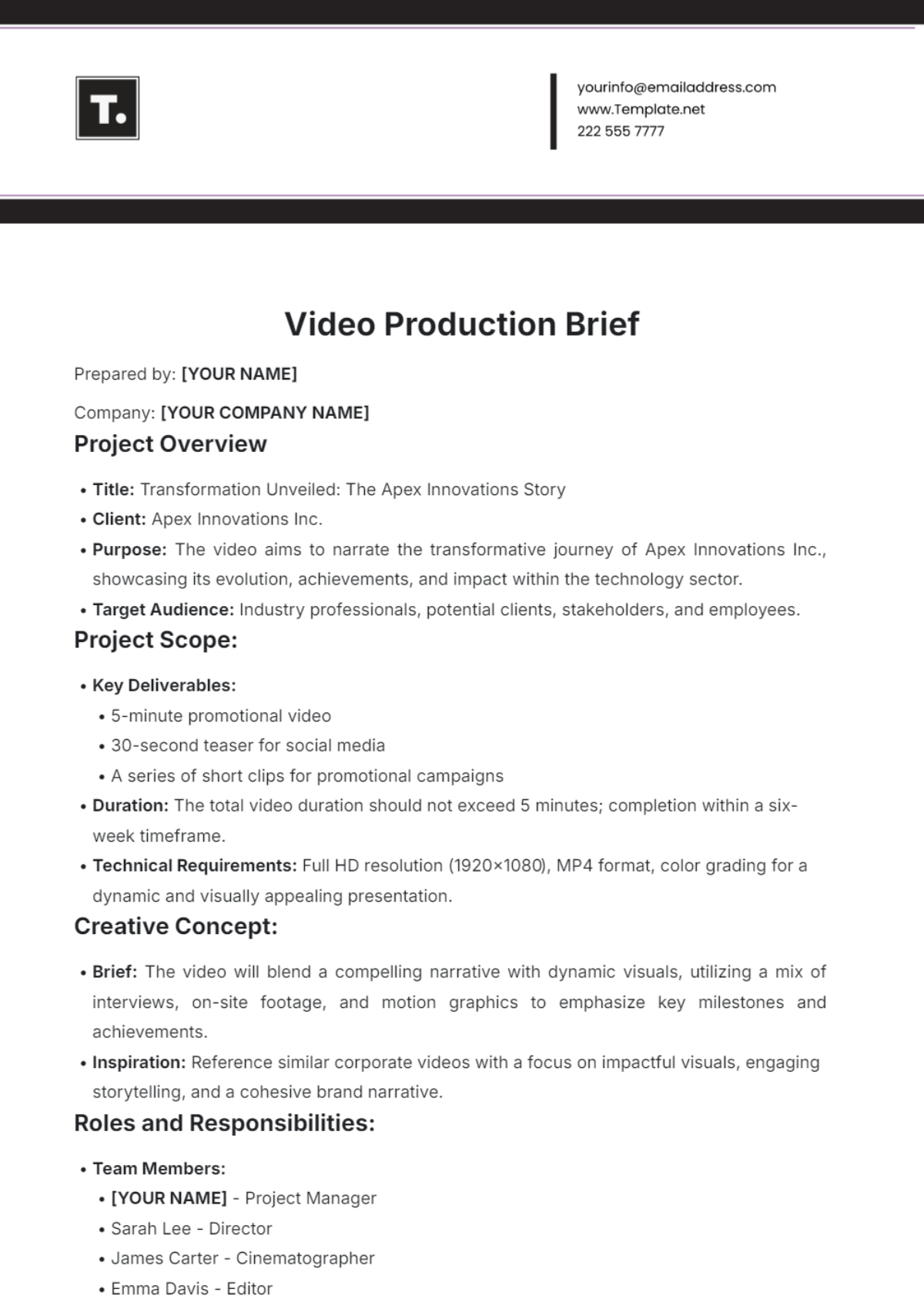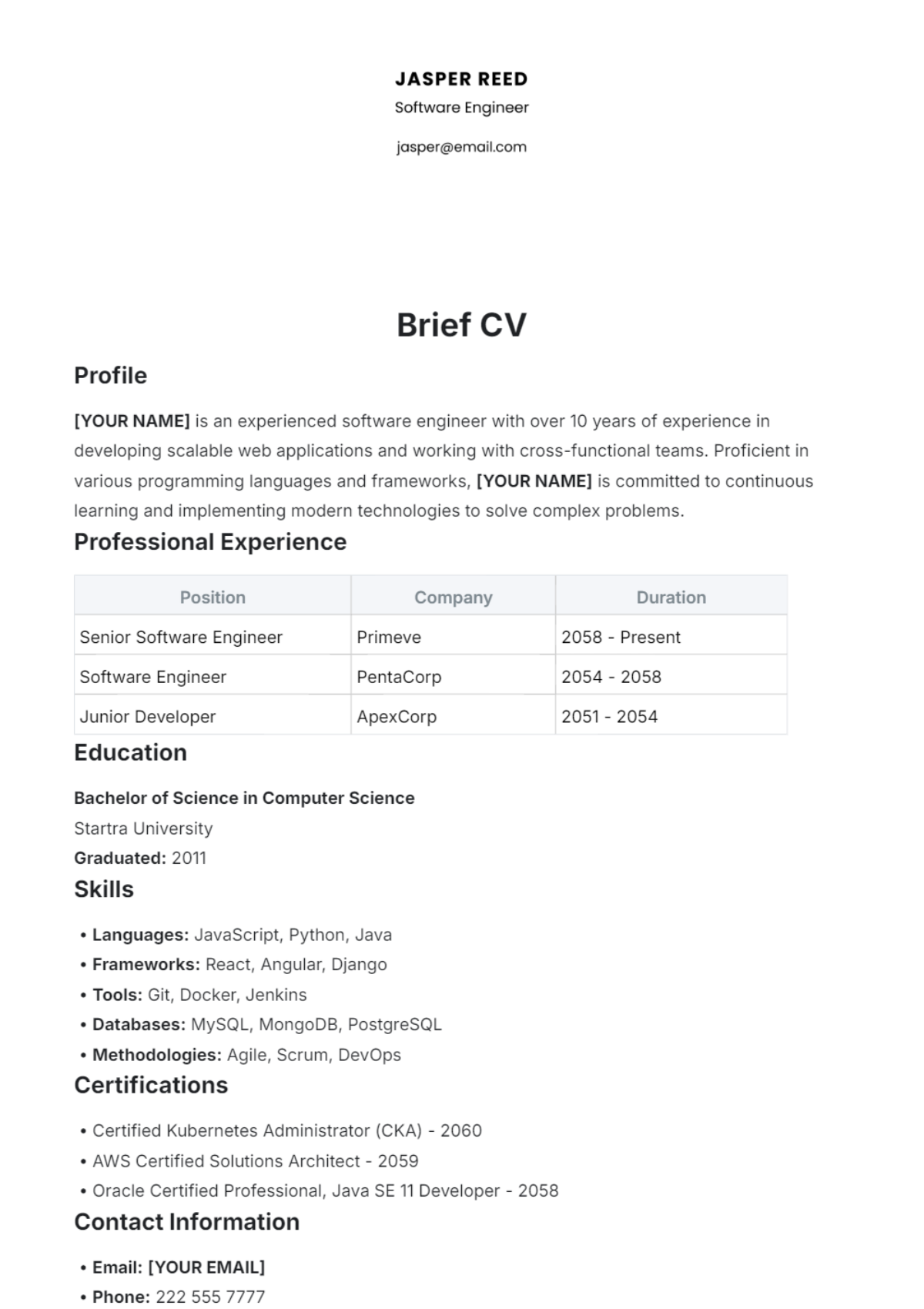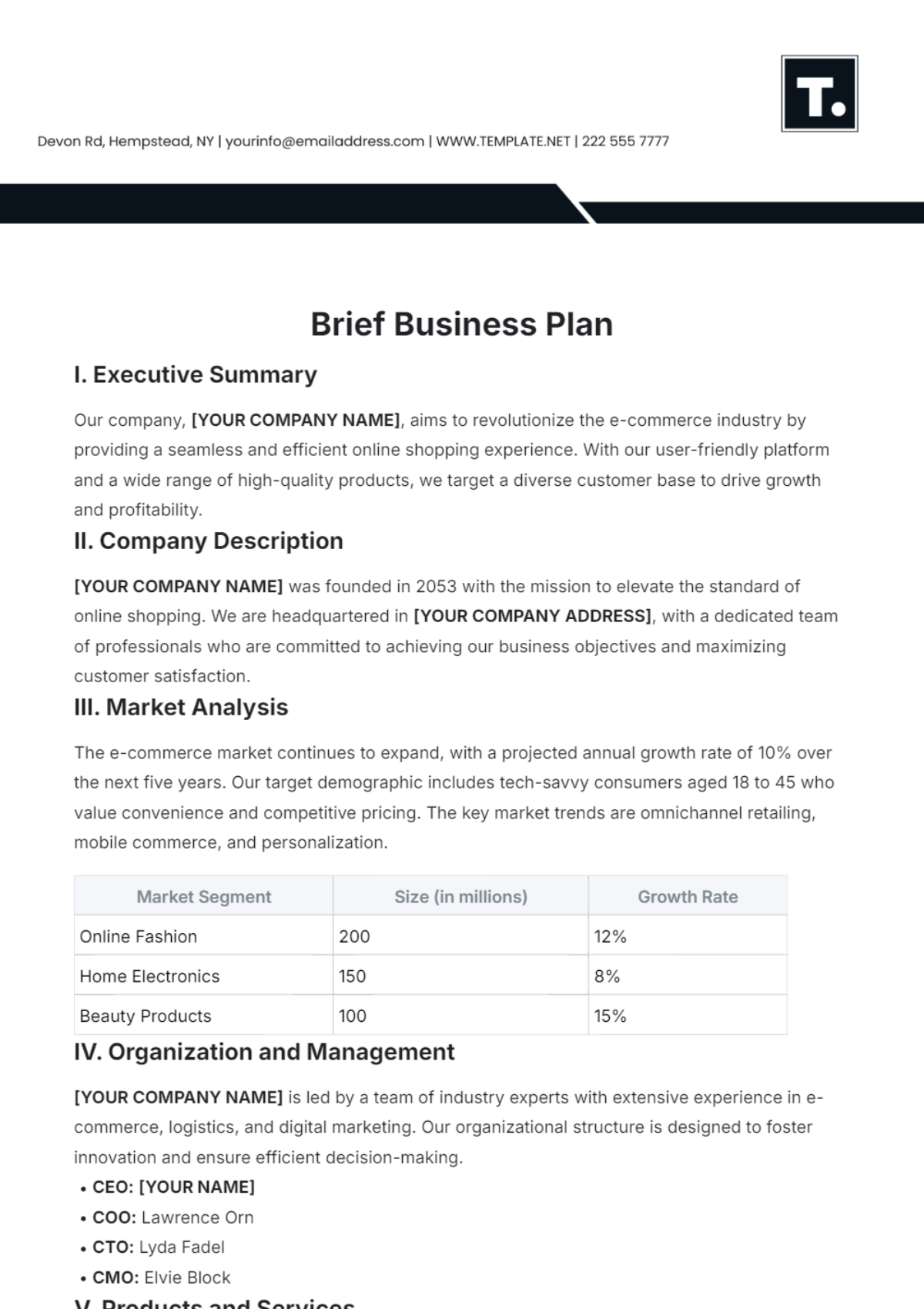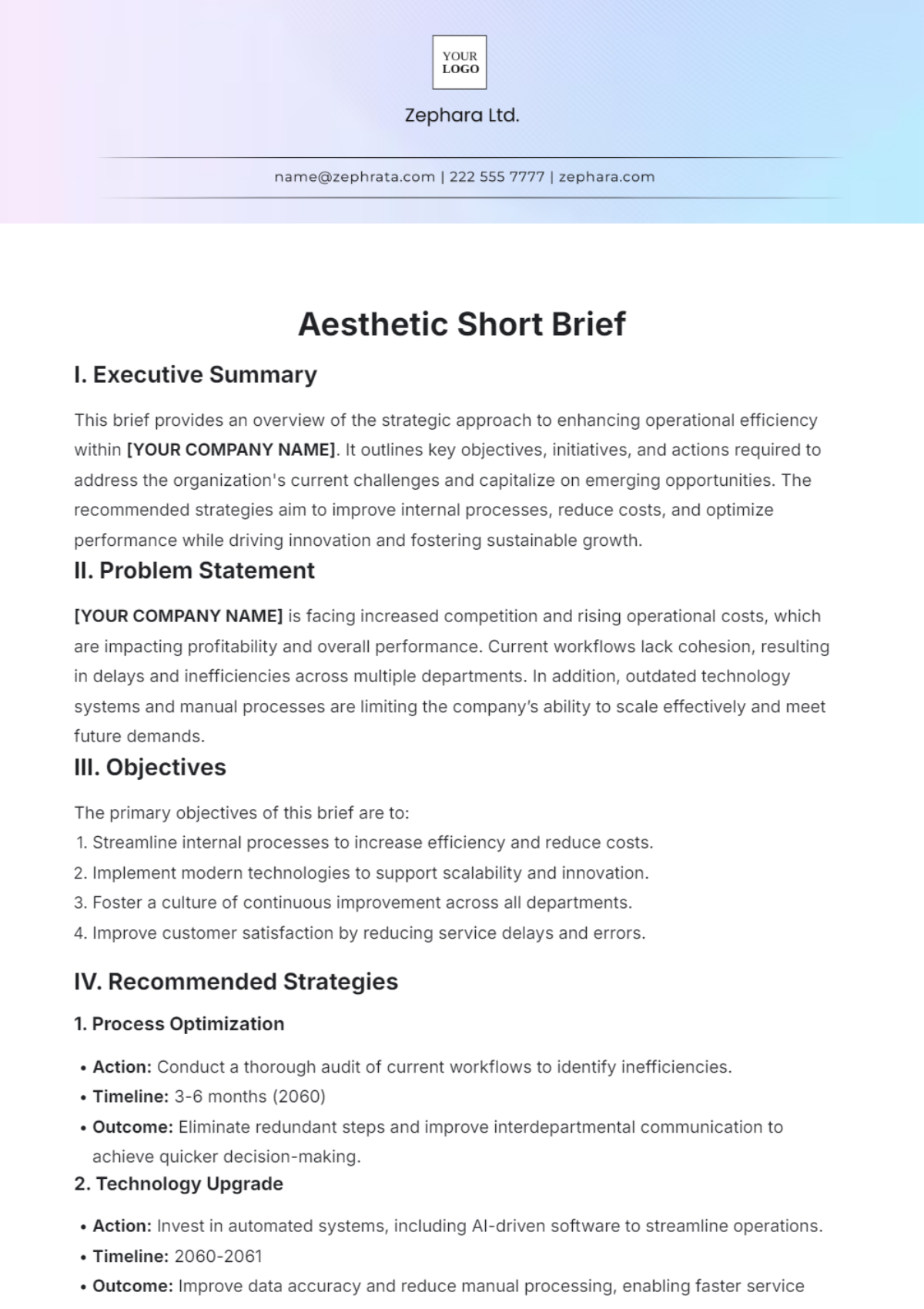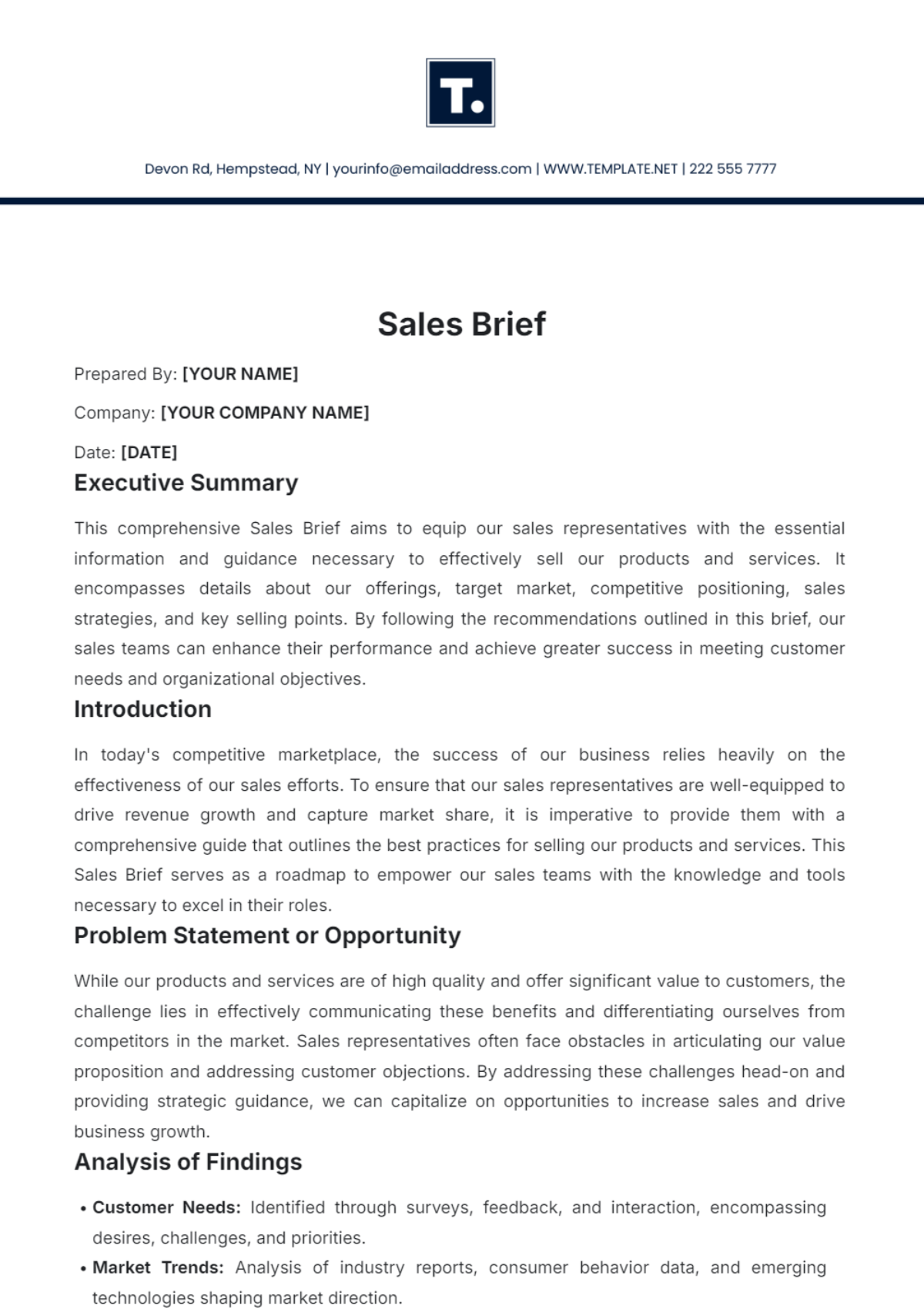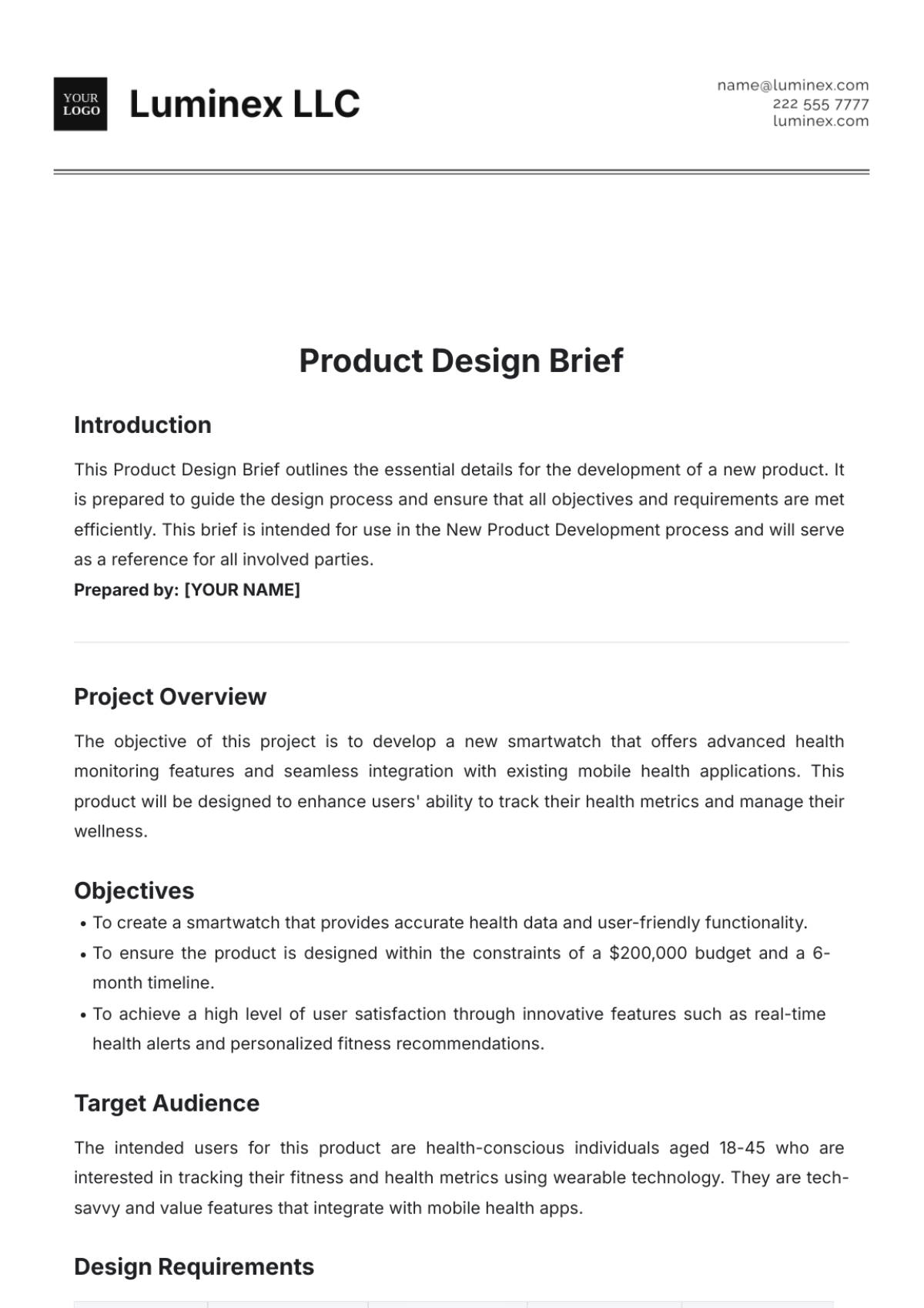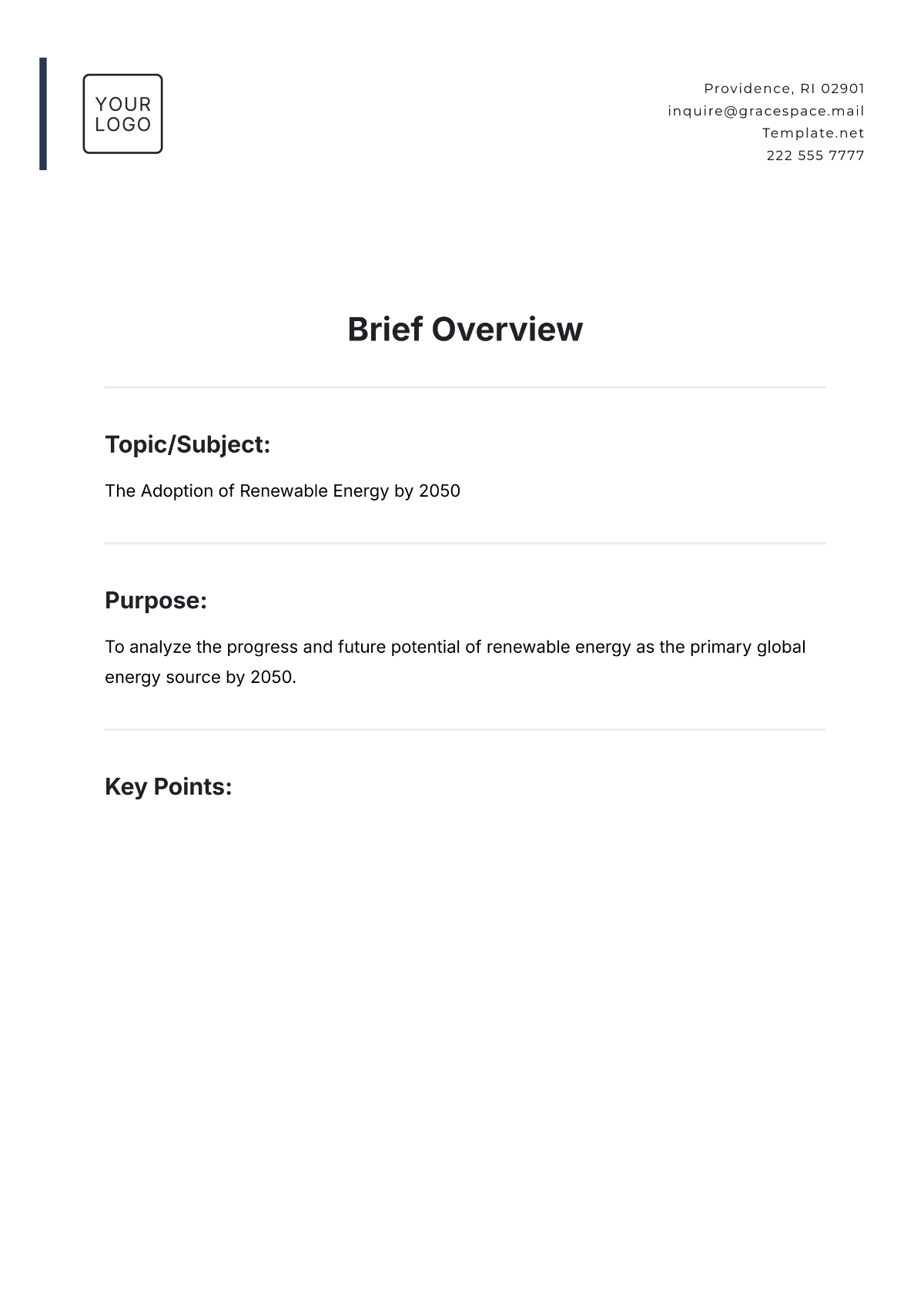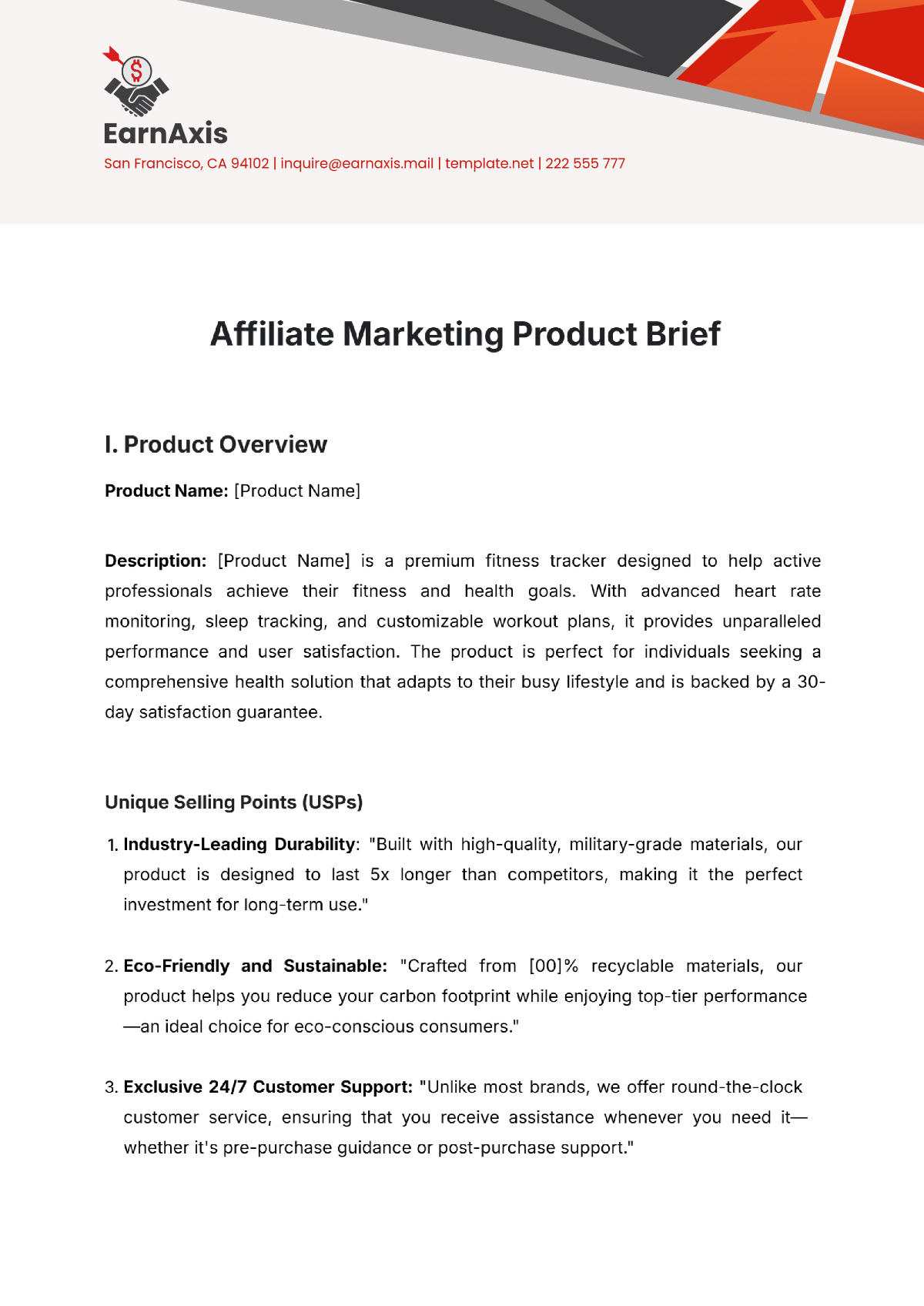BASIC BRIEF
Prepared by: [YOUR NAME]
[YOUR COMPANY NAME]
1. Introduction
This document serves as a comprehensive brief for our community health initiative aimed at improving health outcomes in underserved areas. This initiative is not-for-profit and depends heavily on grants and funding for its actualization. Our goal is to create sustainable changes in community health by addressing the root causes of health disparities and empowering individuals to take control of their well-being.
2. About the Organization
[YOUR COMPANY NAME] is a non-profit organization dedicated to advancing health equity by empowering communities, implementing comprehensive health interventions, and advocating for healthy policies. Our uniqueness lies in our integrated approach to community health, considering all aspects, including physical, social, and mental well-being. With over a decade of experience in community engagement and health promotion, we have established strong partnerships and networks to support our initiatives.
3. Project Goals
To improve the health status of the underserved populations in the community, we aim to provide accessible and culturally sensitive health services that meet the diverse needs of the community. To empower communities to identify and address their own health needs, we will facilitate capacity-building workshops and support grassroots initiatives led by community members. To enhance the capacity of local health systems to effectively serve the community, we will collaborate with healthcare providers to strengthen their skills and resources.
Project Goals |
- Improve health status of underserved populations - Empower communities to address their own health needs - Enhance capacity of local health systems - Our approach emphasizes community participation and ownership, fostering sustainable changes in health behaviors and outcomes. - By empowering individuals and communities, we aim to create a ripple effect that extends beyond the duration of our interventions. - Through collaborative efforts, we seek to build a resilient healthcare infrastructure that can adapt to evolving community needs. |
4. Methodology
This project will utilize both quantitative and qualitative methods for effective health interventions. The steps will include:
Community Health Needs Assessment (CHNA): We will conduct surveys, interviews, and focus group discussions to identify the prevalent health issues in the community. This process will ensure that our interventions are tailored to address the specific needs and concerns of the population.
Partnership Development: To ensure a holistic approach, we will collaborate with other stakeholders like health practitioners, government bodies, and local leaders. By leveraging existing resources and expertise, we can maximize the impact of our interventions and promote sustainability.
Implementation: Based on the CHNA findings, tailored health interventions will be implemented, ranging from disease prevention and management programs to health promotion campaigns. Our team will work closely with community members to co-design and implement initiatives that are culturally appropriate and responsive to local realities.
Monitoring and Evaluation: Regular audits will be conducted to measure the project's success against set goals, enabling us to make necessary adjustments for maximum impact. Through continuous monitoring and evaluation, we will ensure accountability and transparency in our activities, while also fostering a culture of learning and improvement.
5. Expected Outcomes
Upon the implementation of this project, we envisage the following results:
Improved health literacy and behaviors among community members: Through targeted education and awareness campaigns, we aim to empower individuals to make informed decisions about their health and well-being.
Increased access to quality health services: By strengthening local health systems and expanding service delivery points, we hope to reduce barriers to healthcare access and improve health outcomes for underserved populations.
Reduction in the prevalence of identified health issues: By addressing the root causes of health disparities and implementing evidence-based interventions, we anticipate a decline in the incidence of common health problems such as chronic diseases, infectious diseases, and maternal and child health issues.
Heightened community involvement in health matters: Through community engagement activities and participatory approaches, we aim to foster a sense of ownership and responsibility for health among community members, leading to sustained improvements in health outcomes over time.
Expected Outcomes
- Improved health literacy and behaviors
- Increased access to quality health services
- Reduction in prevalence of identified health issues
- Heightened community involvement in health matters
- Our ultimate goal is to empower communities to become active agents of change in their own health destinies, driving long-term improvements in health equity.
- By fostering a sense of collective responsibility for health, we aim to create a supportive environment where individuals can thrive and lead healthier lives.
- Through sustained efforts and partnerships, we aspire to create a ripple effect that extends beyond the immediate beneficiaries, benefiting future generations.
6. Budget Outline
Cost Items | Estimated Cost |
|---|---|
Needs Assessment | $10,000 |
Community Outreach | $20,000 |
Implementation of Health Programs | $50,000 |
Monitoring and Evaluation | $15,000 |
The budget allocation reflects our commitment to cost-effective strategies that maximize impact and ensure accountability in resource utilization.
We are open to exploring additional funding opportunities and in-kind contributions to further support the sustainability and scalability of our initiatives.
Transparency and efficiency are paramount in our financial management approach, ensuring that every dollar is invested wisely to achieve meaningful outcomes for the community.
7. Conclusion
As a nonprofit organization, [YOUR COMPANY NAME] relies on funding and donations to carry out this community health initiative. The successful implementation of this work will undoubtedly improve health outcomes in the community and contribute significantly to achieving health equity. We look forward to your kind support in this venture.
Your partnership and support are crucial in helping us realize our vision of a healthier and more equitable future for all. Together, we can make a tangible difference in the lives of underserved communities, empowering them to thrive and flourish in good health.
